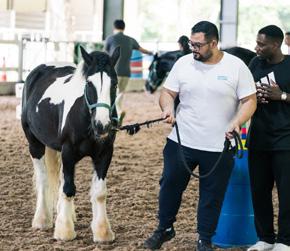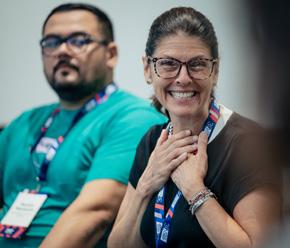
Thrive globally in a fragmented world
OWP Singapore
Post-Event Report 2025
sessions and learning immersions




OWP Singapore
Post-Event Report 2025
sessions and learning immersions










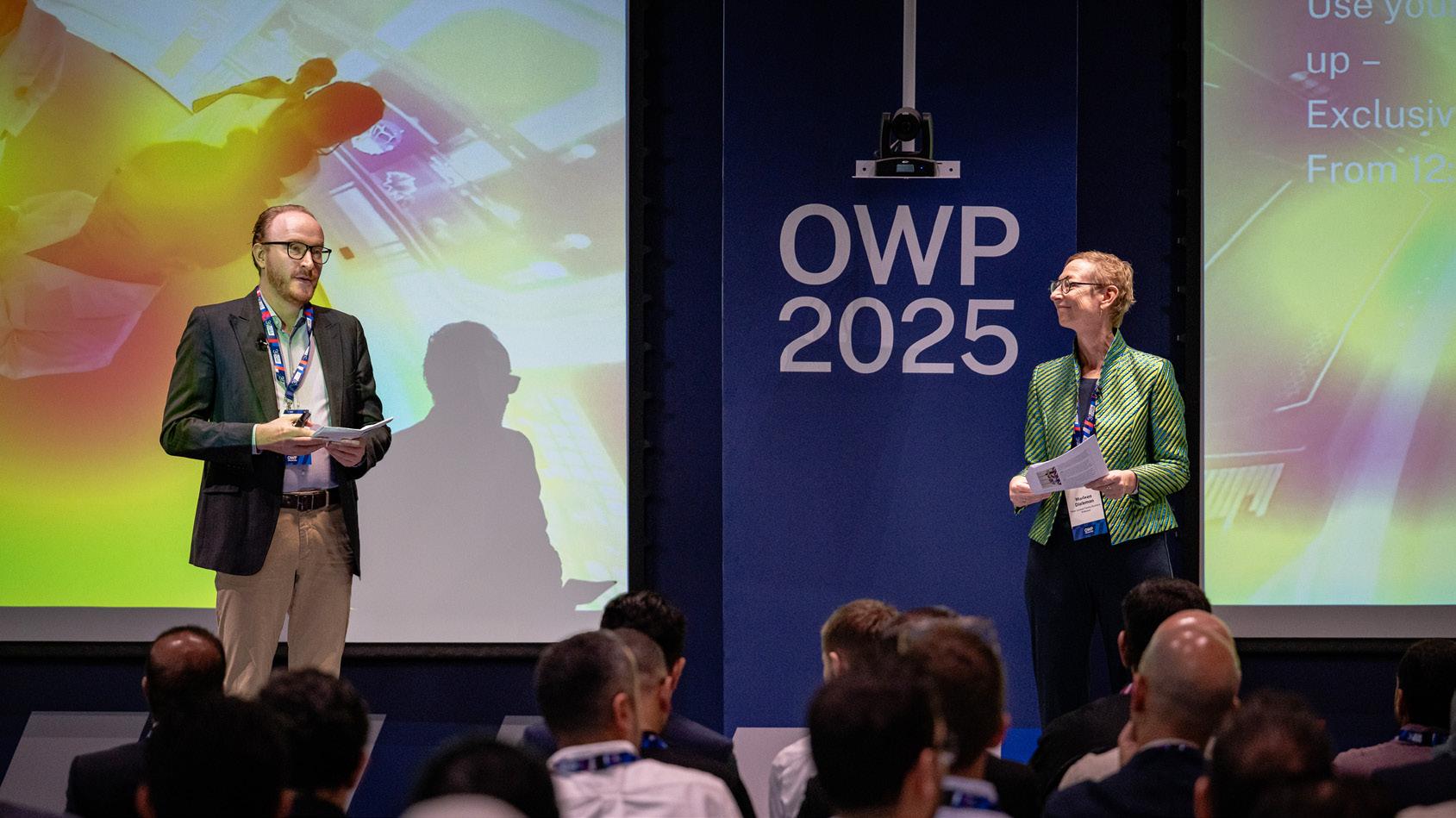










We were honored to host you in Singapore as we celebrated 30 years of Orchestrating Winning Performance, IMD’s flagship leadership program.
OWP is a high-intensity week of deep learning, connection, and inspiration with many standout moments, yet this edition was particularly memorable. The energy in the hallways and during the networking breaks reminds us of why it is so important to take the time away from our busy lives to learn and connect with leaders from across the world. More than 200 of you, from 141 companies and 26 countries, came together as one global community to unpack this year’s theme ‘How to thrive globally in a fragmented world’. We asked ourselves how can leaders turn turbulence into transformation? Together, we explored strategy, innovation, and leadership in a world that’s moving faster and growing more fragmented and complex.
Our theme this year could not be more relevant. It’s a reminder that leadership today is not about avoiding complexity but navigating it with clarity.
Across 88 sessions and four powerful keynotes, we explored how to sharpen strategy and turn uniqueness into competitive advantage. We practised rethinking to identify blind spots fast and we learned when to hold power and when to share.

We discovered how AI is a catalyst for transformation, cutting through the hype to focus on what truly creates value. We experienced Singapore at its best, from urban planning and mobility systems to world class infrastructure and fintech. And we learned that leadership lessons can be found in unexpected places: among horses, in the boxing ring, and in stillness, where reflection opens space for reinvention and connection.
More than lessons, these were timely reminders that thriving in a fragmented world starts with leading ourselves differently. As leaders, you are the impactful. It is now in your hands to extend that impact to your teams, organizations, and communities.
It may feel challenging to take on board everything that you learned at OWP as you settle back into your routines. With this in mind, we encourage you to read this report and to refresh your learnings and explore the sessions you missed. Set aside time for the recommended reading for a deeper dive into several topics. And make full use of our Thrive app, which helps you define, develop, and crucially, follow through on your goals. The helpful nudges are designed to support your reflection and enhance the long-term impact of your learning.

We are committed to supporting your continued development and growth and look forward to seeing what you achieve. Stay connected to one another and to us. Together, let’s continue to drive positive change.
Thank you for choosing IMD as your partner in learning at OWP. As we reflect on our time spent together, let’s look ahead and face challenges with boldness, move with teamwork, and celebrate diversity in every form.
We look forward to connecting with you again.

Mark Greeven Professor of Management Innovation and Dean of Asia
Marleen Dieleman
Peter Lorange Family Business Professor
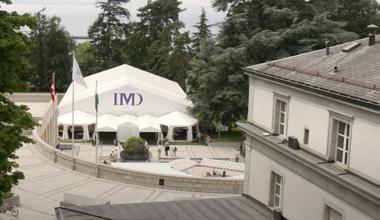


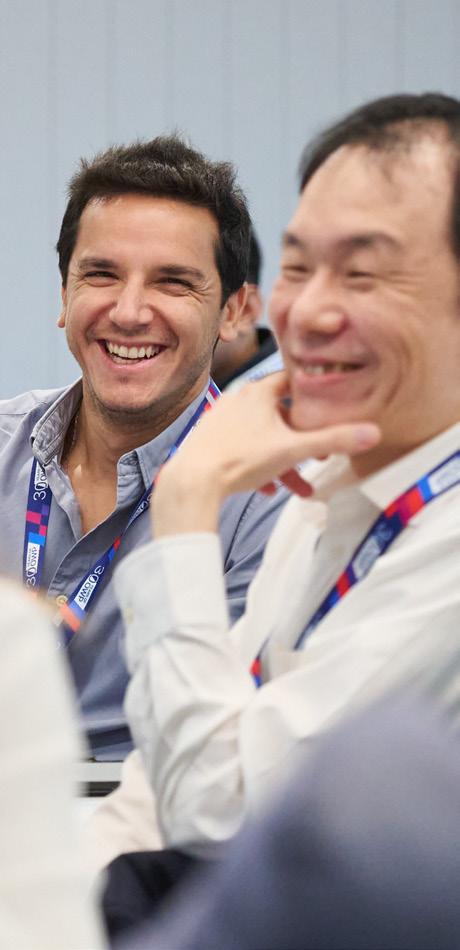














From Wuhan to the boardroom: Dan Luo’s journey to impact
Omar Toulan

Learning together, leading forward: How OCBC’s leadership journey at OWP shows the power of shared learning
The summaries of the sessions in this report were all generated using IMD’s AI tool. The tool was given the following prompt:
“Provide a 500-word summary written by <(Author)> of <his/her > session on ‘<title>’, for executives who attended the session to give them a short summary of what was covered. Include up to five key take outs for executives to implement in their own role and organization. Avoid repeating the same content in the summary and in the take-outs.”
You can generate your own personalized summaries – and create summaries for other sessions not included in this report. Access the tool here
Your OWP AI-powered accountability partner.
Designed to support you in defining and achieving meaningful development goals, one nudge at a time.
What Thrive offers:
• Guided coaching conversations to help you explore and define meaningful development goals.
• Regular check-ins to maintain momentum and support accountability.
• Progress tracking and reflection tools that reinforce long-term behavioral change.
• Instant access anytime, anywhere to support your continued growth.
Start your Thrive journey now:
1. Identify real development goals, challenges, or areas you want to explore further.
2. Thrive will take you through a structured conversation based on coaching best practices to clarify your focus, reflect on what is shaping your current experience, and help you to sustain your commitment to step change.
3. Thereafter, you will receive weekly nudges via email to check in, reflect on your progress, and adjust as needed.
Scan this code to start using Thrive today!
For additional support: info@imd.com

I learned in my first session that OWP is not just a learning program. I discovered that it’s about the full experience. It’s about inspiration, about how we come together and have dialogue and learn from each other, as well as from the professors and leading authorities on topics.
Anish Lalchandani
Global Head of Talent Management
A.P. Moller - Maersk


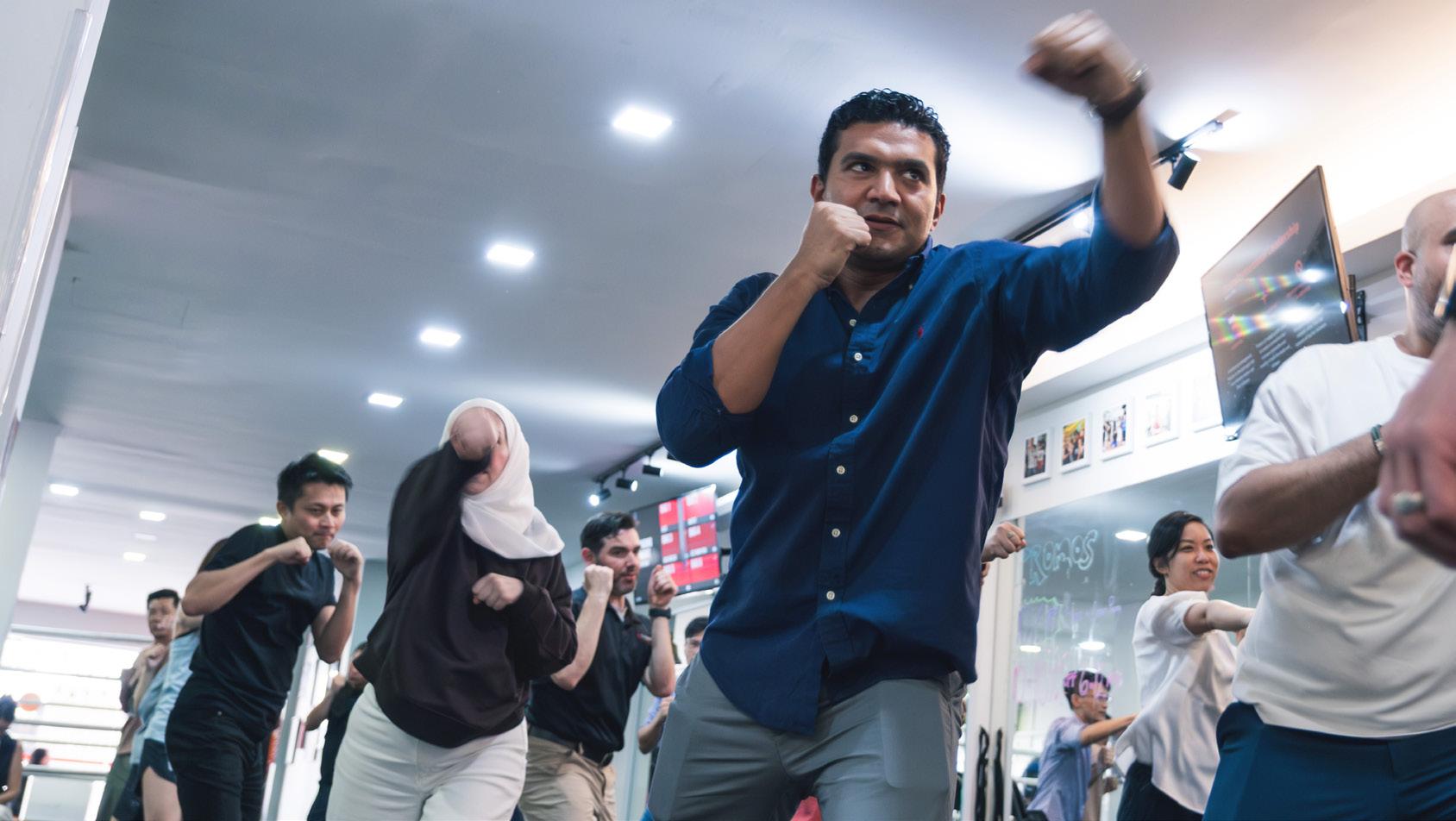
gained from stepping out of the classroom and into the unknown
Stepping out of your comfort zone, into unexpected places and new experiences, can open new paths of learning. Participants at this year’s OWP were invited to attend eight curated immersive sessions that took them across the city, where they explored leadership in action outside of the classroom.
From Singapore’s most forward-thinking institutions to boxing rings and equine paddocks, each setting became a live test of awareness, adaptability, and courage, proving that true growth comes not from studying leadership, but from living it.
The immersions began at the Urban Redevelopment Authority (URA), where participants explored how a nation just 734 km² in size plans with vision, data, and design to make the impossible possible. Through interactive exhibits and in-depth discussions with city planners, they discovered how Singapore balances growth, liveability, and sustainability through meticulous long-term planning.
The immersions are critical because they act as a bridge between theory and practice; it brings everything to life.
Justin Sia Business Head, Emerging Business Sales OCBC Bank

The visit to SMRT Corporation Ltd complemented this by showing how leadership and systems thinking sustain trust at scale, enabling safe, efficient mobility for nearly two million passengers each day. Together, these experiences demonstrated how Singapore turns constraints into capabilities, anchoring progress in public value, foresight, and design excellence.
It’s incredible to see so many cultures and nations come together to learn from one another. Sessions like this remind us that growth starts with understanding how others think and live. This was by far one of the most interesting sessions I’ve ever attended.
Abdulaziz M. Mallah Senior Manager, Mobility Planning & Strategic Operations Diriyah Company
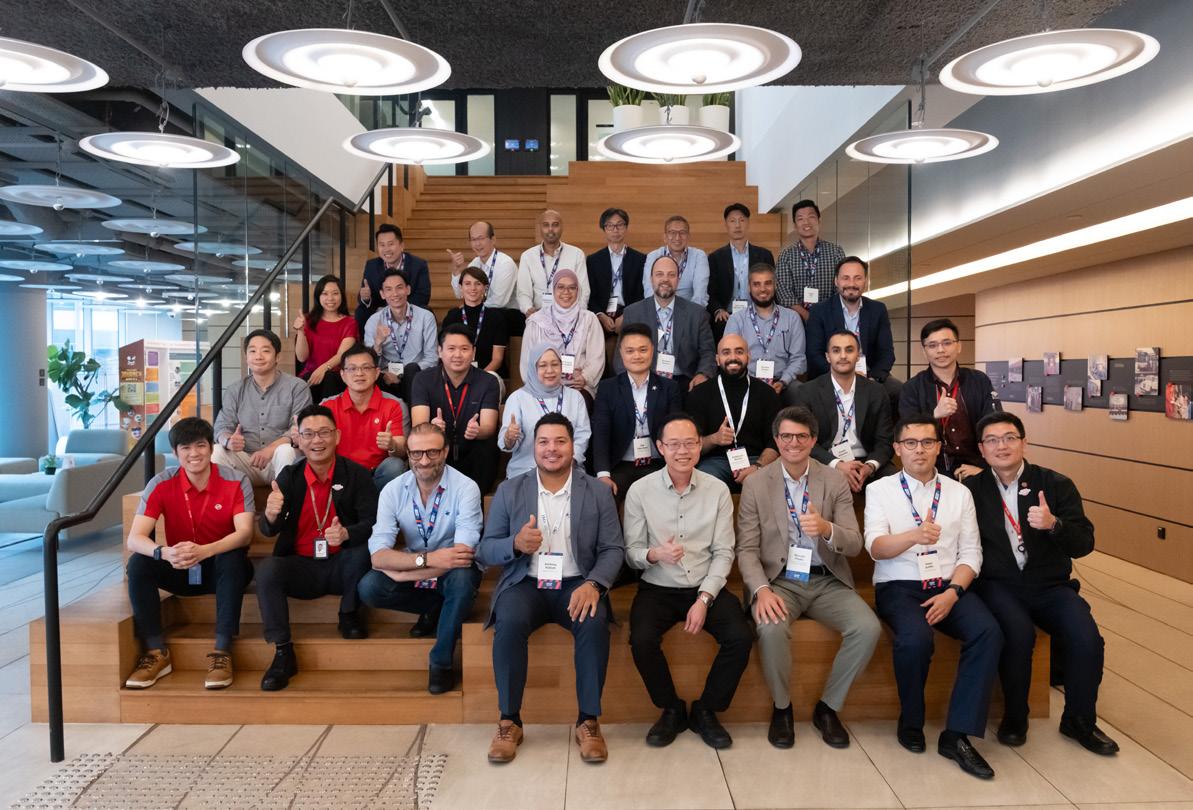
Stepping into Changi Airport, participants saw how precision, foresight, and innovation come together to design one of the world’s most admired customer experiences. Behind the seamless journey of over sixty million passengers each year lies a leadership mindset of anticipation, adaptability, and continuous improvement, a powerful metaphor for organizational excellence that never stands still.
Exploring Singapore’s fintech hub, participants met the founders of Pints.ai and PowerCred at Tenity, a platform for startups, to examine the real-world impact of AI on business and leadership. Through these exchanges, they saw how intelligent systems are reshaping financial decision-making, not replacing human judgment but amplifying it. The session highlighted that the future of leadership lies not just in adopting technology, but in embedding ethics, empathy, and strategic curiosity at the core of innovation.
When we move from good to great, it’s not just about the doing, it’s about the thinking. Stepping out of our comfort zone helps us grow.
Celina Chan Head of Sustainable Finance
OCBC Bank


Participants learnt that not all lessons came from the boardroom. At the Riding for the Disabled Association of Singapore (RDA), they experienced leadership through connection, empathy, and trust. Working alongside instructors and horses, they discovered that real influence comes not from authority, but from presence, clarity, and emotional intelligence. “One of the many standout moments was the ‘what horses can teach us’ workshop, which delivered leadership and management lessons in a truly unconventional and impactful way, a reminder that great leadership starts with self-awareness and empathy”, said Fouad ElChamaa, Senior Manager Risk Management, The Arab Energy Fund
This immersion was a very special moment; it is totally different from being in a classroom and you experience things in a different way. Being close to horses teaches you how important it is to be present, to be mindful, to be clear about your objectives. Leading the horse is not very different from being that of a leader.
Pedro Carvalho
CEO Absa Bank Mozambique
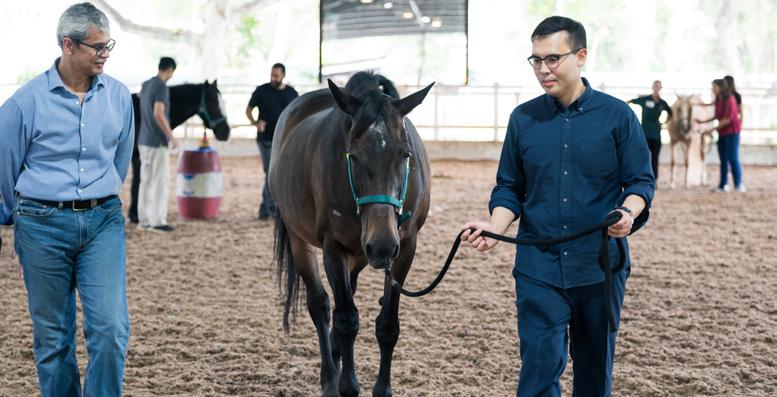
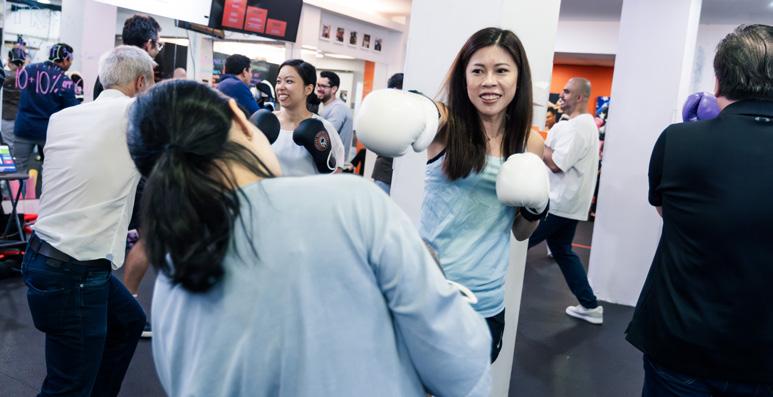
Among the week’s most dynamic sessions, the boxing immersion at Spartans Boxing Club provided the opportunity for participants to test teamwork, communication, and composure under pressure. Guided by IMD coaches, they discovered how trust, adaptability, and instant feedback drive performance when tension rises. The session highlighted that transformational leadership under stress requires focus and collaboration more than control.
The biggest takeaway for me is how powerful it is to learn through experience. When we’re trying to teach or absorb something truly transformative, a visceral, immersive exercise like this connects mind, body, and purpose, it makes the learning real and lasting.
Sales
Toward the end of the week, participants experienced stillness amid an energized schedule. In a mindfulness session, they were invited to slow down and lead with presence. Through guided breathing and reflection, they explored the Daoist principle of Wu Wei, “effortless effort”, discovering that clarity, not control, is what sustains effective leadership.
Back on campus, the SpheriCO2 augmented reality simulation brought these lessons full circle. In a fully immersive 360° environment, participants faced real-time challenges that tested their situational judgment, teamwork, and decisionmaking. The experience reinforced a crucial truth: leadership agility depends not on knowing the answer, but on creating clarity amid complexity.
Each immersion, in its own way, brought a shared truth to life: that leadership isn’t something you learn once; it’s something you experience every day.

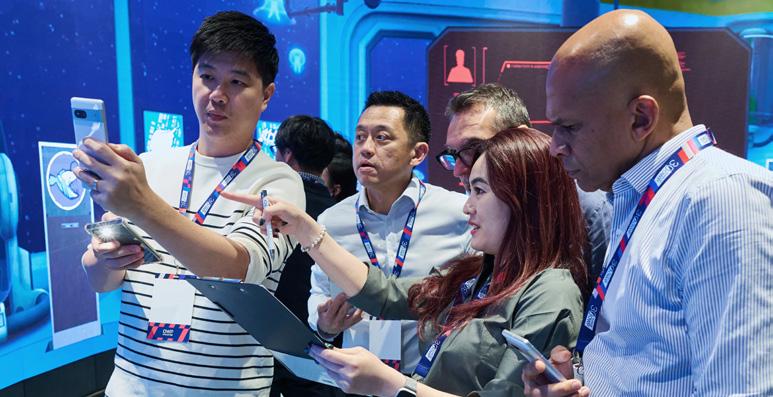
The breathing practice was a new learning for me: when you’re angry or stressed, pause, center yourself, then choose how to act.
Pragati Vaswani Managing Director, Corporate Sales & Structuring, Global Markets OCBC Bank
Learning about how SMRT leverages AI toward accelerating and even surpassing their business objectives was a real light bulb moment for me. OWP is an exceptional program, the experience wasn’t just educational, it was transformational.




Watch the highlights
David Bach
President of IMD and Nestlé Professor of Strategy and Political Economy
Globalization as we know it is over. The United States no longer stands alone, and China’s rise has redrawn the world’s balance of power. In this new age of parity, in which volatility has spiked as US global leadership has waned, resilience has replaced efficiency as the true measure of competitiveness.
We are no longer living in the world that shaped most of our professional lives.
For decades, leaders operated under a stable set of assumptions: that globalization would deepen, inflation and the cost of capital would remain low, democracy would spread, and Western technological dominance would endure. That world is gone, and those assumptions have been upended.
What has emerged instead is a new equilibrium – an age of power parity. The United States no longer stands alone as the world’s uncontested leader. China’s rise has redrawn the map of global influence, forcing a rethink of how globalization works. The open, US-led rules-based order that underpinned prosperity has fractured, replaced by a world that is more fragmented, more competitive, and far less predictable.
For half a century, US leadership in markets, technology, and defense underpinned the open international order that allowed globalization to thrive. That foundation has shifted dramatically.
When President Nixon visited Beijing in 1972, China accounted for just 1.5% of global GDP. Even after joining the World Trade Organization in 2001, it represented only about 5%. Today, it is at near parity with the United States.
The transformation goes far beyond scale. Two decades ago, the US dominated nearly every frontier of science and technology. Now China leads in 57 of 64 research domains: from advanced materials and distributed computing to clean energy and manufacturing innovation. That is the shift, and it changes how we compete.
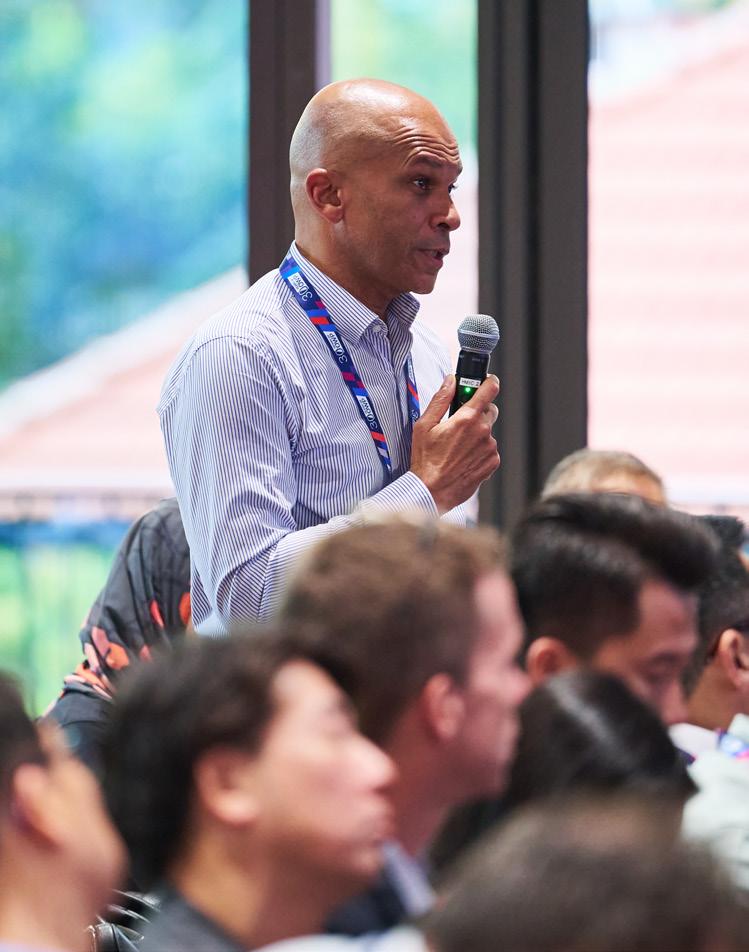
It also changes the logic of global leadership. For decades, the US provided what economists call global public goods – open trade, a stable financial system, and collective security –because it was in its interest to do so. But when another power rises to near parity, the incentive to underwrite the system weakens. The result is a system where power is shared, rules are contested, and competition intensifies.
How the US responds to this new balance of power depends largely on who leads it. Two competing strategies are visible.
Under President Biden, America sought to rebuild alliances to sustain leadership through partnership and collective defense. We saw it in NATO’s renewal, in new security arrangements in the Indo-Pacific to contain China, and in the effort to re-engineer supply chains among trusted allies.
President Trump’s administration rejects that logic. It sees allies as competitors and institutions as constraints. Its preferred tools are tariffs, sanctions, and transactional deals. In this worldview, every relationship becomes a negotiation; every partnership, a test of leverage.
The world has experienced both approaches in the space of just a few years. It is a vivid reminder that in an age of power parity, US leadership itself has become uncertain, and that uncertainty reverberates through the global economy.
For business, this means operating in a world of shifting rules. The stable framework of globalization has given way to a landscape defined by deals, not alliances; power, not principles; transactions, not trust.
If the US steps back from providing global public goods, who fills the void? So far, no single actor has stepped forward. While China, India, and others have benefited from a more fragmented order, none has expressed a desire to sustain it.
That leaves us facing what I call a “world minus one” – a global system that continues to function even as the US disengages. We have already seen this in practice. Twice, the US has withdrawn from the Paris Climate Agreement. Yet the rest of the world has carried on. Science remains science. Economics remains economics.
It is not ideal, but it is far better than the alternative: a descent into protectionism and retaliation, the kind of downward spiral that deepened the Great Depression in the 1930s. The challenge now is to sustain cooperation without relying on a single guarantor.
The question is no longer whether a company can be as efficient as it was five years ago, but whether it can be more reliable than its competitors today.

For companies, these shifts are anything but abstract. They shape strategy, investment, and daily operations. Many leaders describe today’s world as less efficient: the cost of capital is higher, supply chains are less optimized, and geopolitical risk is omnipresent. Yet these conditions apply to everyone.
The question is no longer whether a company can be as efficient as it was five years ago, but whether it can be more reliable than its competitors today.
Resilience has replaced efficiency as the defining measure of competitiveness. That means diversifying suppliers, regionalizing production, and building the capacity to pivot quickly across markets and technologies. That strategy will be more complex, and often more costly, but it will also be more sustainable in a volatile world.
Even amid fragmentation, opportunity remains. The US accounts for roughly 13% of global imports. In other words, 87% of global demand for imported goods lies elsewhere. The global economy is being reconfigured. Businesses that understand this and adapt will be best positioned to thrive.
The future will not be defined by those who hold dominance, but by those who demonstrate direction.
The end of the old order marks transition, not decline. Globalization is being reconfigured, not reversed. The question is what kind of leadership this new era requires.
In times of uncertainty, waiting for stability is not an option. Leadership now means creating clarity where none exists; making choices grounded in purpose and trust; investing in resilience even when the payoff is not immediate.
The task ahead is to navigate a more competitive world with confidence. Volatility may be the new normal, but so is our capacity to adapt. The task is not to wait for stability, but to build it.
The future will not be defined by those who hold dominance, but by those who demonstrate direction. Resilience, purpose, and the ability to generate trust are now the new standard in an age of power parity.

David Bach
President of IMD, Nestlé Professor of Strategy and Political Economy

The session, How to win beyond the market, explored the limitations of traditional market strategies and emphasized the importance of engaging with nonmarket forces–such as governments, NGOs, competitors, and societal stakeholders – to create sustainable competitive advantages. The session began with a simulation game designed to illustrate the tension between short-term profits and long-term sustainability, followed by a debrief and discussion of real-world applications. The overarching theme was the need for businesses to navigate the interconnectedness of market and societal dynamics effectively.
The simulation game involved teams managing factories near a shared water resource, where they had to decide whether to treat or discharge polluted water. While treating water incurred costs, discharging it increased profits but degraded the shared resource. Teams could also fund inspections or awards to influence behavior. The exercise highlighted the challenges of aligning individual incentives with collective outcomes, as pollution and free-riding behaviors led to resource depletion and financial penalties. The debrief revealed that teams prioritizing collaboration and environmental stewardship performed better in the long run, while those focused on short-term gains faced diminishing returns.
Key insights from the simulation included the concept of negative externalities – where individual actions impose costs on others – and the need for mechanisms like regulation, industry selfregulation, or reputation management to align incentives. Professor Bach emphasized that market failures often arise when short-term incentives conflict with long-term goals, requiring businesses to adopt strategies that balance competition with cooperation.
The discussion then transitioned to real-world examples of market failures, such as overfishing, climate change, bribery, and price wars in industries like ride-hailing and dairy. Participants discussed how government regulation, industry self-regulation, and reputation management can mitigate these issues. Bach highlighted the importance of ethical leadership and proactive engagement with nonmarket stakeholders to address systemic challenges and create sustainable value.
The session concluded with a preview of strategies for navigating the nonmarket environment, including interactions with governments, NGOs, and societal forces. Bach underscored the interconnectedness of market and societal actions, urging participants to consider how their business decisions impact broader systems and vice versa.

1. Proactively address negative externalities: Identify areas where your organization’s actions may impose costs on others (e.g., environmental impact, social inequality) and implement mechanisms – such as internal policies or partnerships – to mitigate these effects.

2. Balance competition with cooperation: Avoid destructive competition that erodes value (e.g., price wars). Instead, explore opportunities for industry collaboration, such as shared sustainability initiatives or self-regulation frameworks.
3. Engage nonmarket stakeholders strategically: Build relationships with governments, NGOs, and activists to shape regulatory environments and societal perceptions. This can help your organization anticipate risks and influence outcomes.
4. Leverage reputation as a competitive asset: Invest in ethical practices and transparency to build trust with stakeholders. A strong reputation can differentiate your organization and reduce regulatory scrutiny.
A new world order: Børge Brende on geopolitics, resilience, and risk
by David Bach

5. Adopt long-term thinking: Shift focus from short-term profits to long-term sustainability. Align incentives across teams and stakeholders to ensure collective success, even in challenging environments.
By implementing these strategies, executives can position their organizations to thrive not only in the market but also in the broader societal and regulatory landscape.






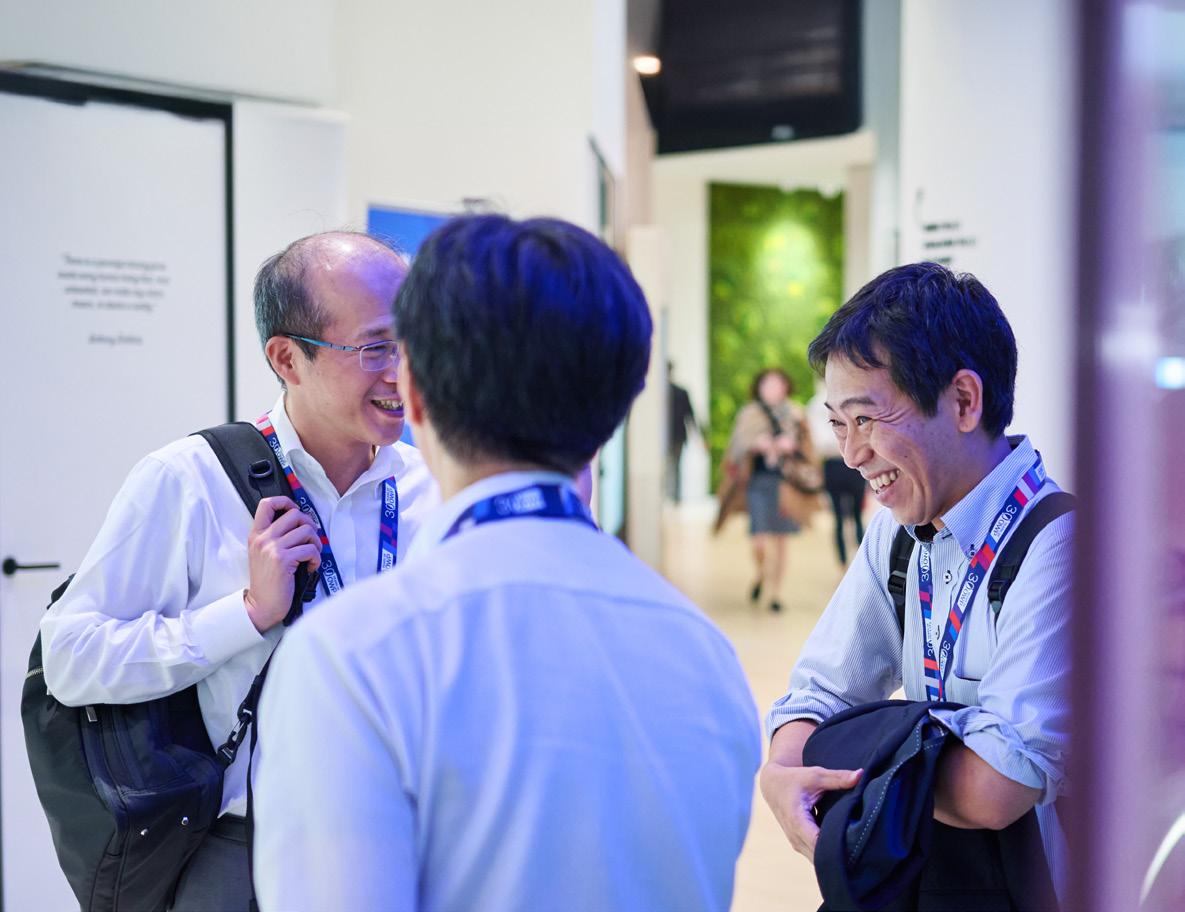
Omar Toulan Professor of Strategy and International Management, MBA Dean and Hilti Chair

The session, led by Professor Omar Toulan, focused on the growing complexity and impact of geopolitical risks on businesses operating in an increasingly interconnected world. Geopolitical risks, defined as political, economic, military, and social uncertainties stemming from global interactions, were distinguished from country-specific risks. The discussion emphasized how globalization has amplified interdependence among nations, creating both opportunities and vulnerabilities for businesses. While global economic ties can mitigate risks by fostering mutual dependencies, they also expose firms to disruptions such as trade wars, political instability, and regulatory changes.
Professor Toulan highlighted the dual-edged nature of geopolitical risks, which can stifle investment, employment, and innovation during periods of uncertainty, but also create opportunities for businesses that can adapt and innovate. For example, industries such as defense, cybersecurity, and renewable energy often benefit from geopolitical shifts. The session explored how companies can navigate these challenges by understanding local norms, institutions, and market dynamics, as well as by engaging with local stakeholders to build trust and resilience.
A key focus was on the importance of scenario planning and horizon scanning as tools to prepare for future uncertainties. Scenario planning involves identifying critical uncertainties – such as inflation, political changes, or technological advancements – and developing multiple potential futures to guide decision-making. Horizon scanning complements this by identifying emerging trends that could disrupt or benefit businesses in the medium to long term. These tools were presented as essential for fostering organizational agility and resilience in volatile environments.
The session also emphasized the role of valuesbased management in navigating geopolitical risks. By aligning decision-making with corporate values, organizations can empower frontline managers to respond swiftly to local conditions while maintaining strategic coherence. Toulan stressed the need for companies to balance longterm strategies with short-term opportunities, structure investments to mitigate risks, and reassess the role of stakeholders, including governments, in shaping business strategies.
The class concluded with actionable insights on how businesses can turn geopolitical challenges into opportunities. By adopting a proactive approach, leveraging insights from geopolitical analysis, and focusing on execution, companies can position themselves to thrive in uncertain times.

1. Develop a geopolitical risk framework: Establish a clear framework to assess and manage geopolitical risks. This includes defining risk tolerance at the board level, identifying specific vulnerabilities, and implementing mitigation strategies tailored to your organization’s operations and markets.
2. Leverage scenario planning and horizon scanning: Use scenario planning to prepare for multiple potential futures and horizon scanning to identify emerging trends. These tools will help your organization anticipate disruptions and adapt to changing conditions with agility.
3. Engage local stakeholders: Build trust and resilience by understanding local norms, institutions, and market dynamics. Collaborate with local partners and governments to navigate regulatory changes and minimize risks when entering new markets.
4. Adopt values-based management: Align decision-making with corporate values to empower frontline managers and ensure consistent responses to geopolitical challenges. This approach fosters agility and strengthens organizational coherence.
5. Turn risks into opportunities: Proactively identify opportunities arising from geopolitical shifts, such as new market openings or industry growth areas. Use innovative thinking and strategic execution to transform challenges into competitive advantages.
By implementing these strategies, executives can better navigate the complexities of geopolitical risks and position their organizations for sustainable growth in uncertain times.
Volatility offers opportunities –but only if you are prepared
by Omar Toulan



Salvatore Cantale Professor of Finance







Led by Professor Salvatore Cantale, this session explored the strategies and practices of successful serial acquirers in the mergers and acquisitions (M&A) landscape. The discussion began by categorizing acquirers into four types: loners, occasional acquirers, sprinters, and serial acquirers. Serial acquirers, who represent only 17% of all acquirers but account for 60% of acquisitions, were the primary focus due to their dominance and systematic approach to external growth.
Cantale highlighted the evolution of the M&A market, noting a shift from sporadic acquisitions by loners to a more professionalized and strategic approach by serial acquirers. These organizations often target smaller, unlisted companies to avoid valuation premiums and market scrutiny, enabling them to maintain stable returns across their acquisition activities. Unlike other acquirers, serial acquirers do not experience diminishing returns as their deal volume increases, showcasing their ability to scale M&A efforts effectively.
A key part of the session was the case study of the Campari Group, a leading serial acquirer in the spirits industry. Campari’s strategy combines organic growth with acquisitions, aiming for a 50/50 balance between the two. The company focuses on acquiring small, local, unlisted brands and integrating them seamlessly into its
portfolio. This disciplined approach, supported by strong governance and a clear strategic vision, has allowed Campari to enhance shareholder value while maintaining operational efficiency.
The session also emphasized the importance of integration in M&A success. Cantale discussed best practices for aligning organizational cultures, streamlining operations, and ensuring smooth transitions post-acquisition. He underscored the need for a professional approach to risk management, highlighting how leading acquirers anticipate and mitigate challenges during the M&A process.
Executives were encouraged to view M&A as a skill set requiring preparation, discipline, and expertise. The session concluded with actionable insights on how organizations can refine their M&A playbooks to drive sustainable growth and innovation.
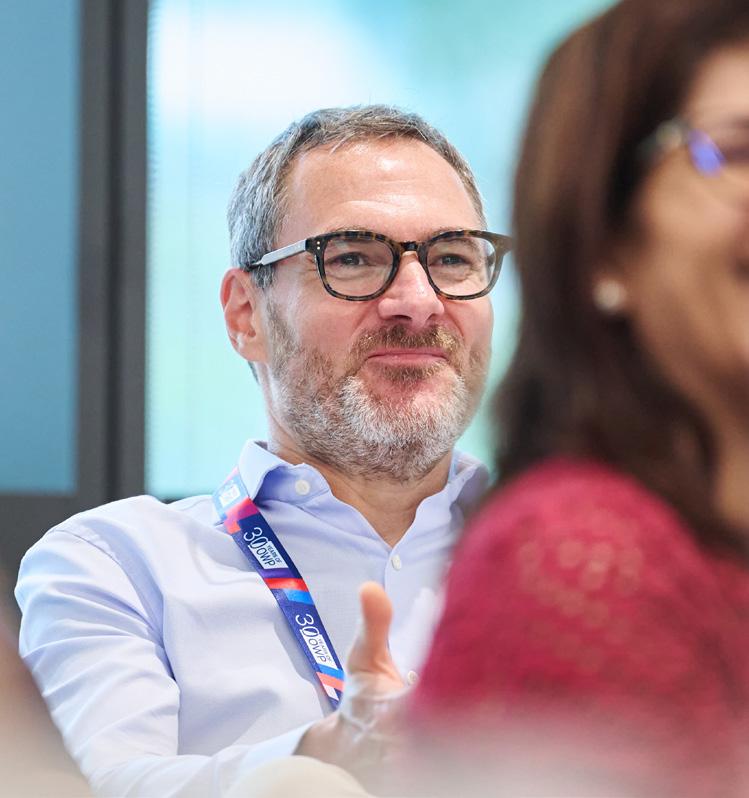
1. Adopt a clear and balanced growth strategy: Successful serial acquirers, like Campari Group, balance organic growth with acquisitions. Executives should define a strategic vision that integrates both approaches, ensuring acquisitions complement existing capabilities and long-term goals.
2. Focus on smaller, unlisted targets: Targeting smaller, unlisted companies can help avoid valuation premiums and market scrutiny, while providing opportunities to acquire niche capabilities or market access. This approach is particularly effective for maintaining stable returns.
3. Prioritize integration excellence: Post-acquisition integration is critical to success. Executives should focus on aligning cultures, streamlining operations, and ensuring seamless transitions to maximize the value of acquisitions.
4. Build a robust governance framework: A disciplined governance structure is essential for managing the complexities of M&A. Establish clear processes for evaluating targets, executing deals, and monitoring post-acquisition performance.
5. Develop M&A as a core organizational skill: Treat M&A as a professional capability that requires ongoing development. Invest in training, tools, and expertise to build a team capable of executing acquisitions with precision and driving sustainable growth.
By implementing these practices, executives can enhance their organization’s ability to navigate the complexities of M&A and achieve long-term success.



Watch the highlights
Renowned social activist known for being the first woman to join the Indian Police Force
Drawing on her trailblazing career in public service, Kiran Bedi, the first woman to join the officer ranks of the Indian Police Service, shows how fearless leadership is built not on authority or power, but on integrity, discipline, and moral courage.
Every leader faces a moment when doing what’s right means standing alone. When that moment comes, hesitation creates more risk.
As the first woman to join the officer ranks of the Indian Police Service, I learned early on that leadership often means challenging expectations, not just others’, but your own. Over four decades in public life – from policing and prison reform to serving as the Lieutenant Governor of Puducherry – I have learned that integrity is the foundation of true authority.
In 1982, while serving as Deputy Commissioner of Police (Traffic) in Delhi during the Asian Games, I directed that all cars parked illegally near the stadium be ticketed, including one belonging to the Prime Minister. I didn’t know whose car it was at the time; it was wrongly parked, and the law applied to everyone.
The decision caused a national uproar, but I refused to back down. If I had hesitated that day, I would have lost the authority of my uniform and the trust of my team. It wasn’t easy being the first woman in a service built by and for men. Every decision I made was watched, tested, and often resisted. But fairness has no gender. What earned respect was consistency, not conformity. That incident became the cornerstone of my leadership philosophy: courage is not about aggression; it is about conviction.
Fearless leadership is not the absence of fear. It is the mastery of it. Integrity is not negotiable. The moment you compromise, you lose everything: your authority, your credibility, your command.

Before you can lead others, you must know what drives you. Purpose is your inner compass: it tells you what to do when rules are unclear and when resistance is high. My own sense of purpose was shaped by sport. As a national-level tennis player in my teens, I learned discipline, fairness, and resilience on the court. Tennis taught me consistency: losing is only failure if you stop learning. Those lessons became the foundation of my leadership: fairness in every decision, discipline in every action, and calm in every storm.
Discipline has been the foundation of my entire life. I never waste a minute. I plan my day. I stay fit in body and mind. When you command yourself, you earn the right to command others.
When you lead with purpose, you stop chasing popularity and start building trust. You stop asking “What will people think of me?” and start asking “What is the right thing to do?”
The courage to act with conviction must be matched by the humility to listen. Over the years, that belief guided me from the streets of Delhi to the walls of Tihar Prison, where the challenge was no longer enforcing the law, but restoring humanity.
When I took charge of Tihar Prison, one of Asia’s largest and most violent jails, I encountered a system built on fear. It was a city within a city: overcrowded, angry, and hopeless.
My first instinct was not to punish but to listen. You cannot police people into change; you must persuade them. I introduced meditation, education, vocational training, self-governance, and cleanliness. People started calling it the Tihar Ashram (spiritual retreat). Change came slowly, but it came. Violence dropped, literacy improved, and inmates began to see themselves as participants in reform rather than victims of punishment.
I called my approach the 3C model: Correction, Compassion, and Clarity. Correction without compassion breeds resistance. Compassion without clarity creates confusion. True transformation requires all three. The same principles that worked in Tihar apply everywhere: correction gives direction, compassion gives connection, and clarity gives conviction.
People don’t follow titles. They follow trust.
Real reform is about earning trust, not imposing control. What I learned in Tihar stayed with me for the rest of my career: when people are treated with dignity, they begin to believe in their own potential. That belief is what makes transformation sustainable.

Across every role I have held, from policing and prison reform to public administration, one principle has held true: trust is the currency of leadership. People don’t follow titles. They follow trust.
My leadership philosophy today rests on what I call TEA: Trust, Empowerment, and Accountability. Trust begins with transparency. Empowerment gives people ownership. Accountability ensures progress. Leadership is not about sitting at the top – it’s about being in the middle: listening, connecting, and holding the system together. When you lead from the middle, you stay close to reality and close to your people. That is how you build trust that lasts.
When you delegate, you give dignity. You make others part of your success, and that’s how you create ownership and trust. Consistency earns credibility; even your critics learn to respect it.
Even the strongest systems are tested when pressure mounts. Trust is built over years but can be broken in a moment of fear or doubt. As leaders, our real test comes when those values are challenged, when doing the right thing becomes costly.
Standing by your convictions always brings resistance. When you stand for something, you will be tested. But every test refines you.
Over decades of public service, I have faced political opposition, criticism, and personal attacks, but never compromised. Fear is energy. Use it. Channel it. Master it. Turning fear into fuel gives you alertness, courage, and focus. It keeps you responsible, and consistency builds credibility. Lose your credibility, and you lose your command.
When you stand for something, you will be tested. But every test refines you.
Courage is rarely loud. It is quiet persistence: the discipline to show up every day and do what’s right, even when no one notices. Fearless leadership is about consistency, not charisma. It is about being reliable in your values.
True leadership is an inner journey before it becomes an outer one. The courage to face – yourself, your fears, your ego, your limits – is what prepares you to serve others with clarity and humility. Once you master yourself, control no longer matters; contribution does. Leadership, to me, is about service: the question I ask myself every day is simple: what more can I give?

Today, as the Founder of the India Vision Foundation, I continue that mission by supporting education, empowerment, and rehabilitation programs for women and children affected by imprisonment. What began inside Tihar has grown into a movement for human dignity and systemic reform.
Whether reforming prisons, mentoring officers, or supporting civic initiatives, I have learned that service is the true measure of leadership. Expand your portfolio of giving – that is how you measure your life.
Expand your portfolio of giving – that is how you measure your life.
Fearless leadership, at its heart, is service anchored in purpose. It is moral clarity in action. You cannot always choose your challenges, but you can always choose your response.
When you choose courage over fear, conviction over convenience, and service over self, you don’t just lead, you transform.

OWP has changed the way I think about leadership. I used to think that leadership is about control, but now I know that leadership is about courage. Courage to be firm, to listen, and to lead your organization with heart and purpose.
Layla Albasri Manager and owner of schools in Baharain


Ric Roi Affiliate Professor of Leadership and Organization
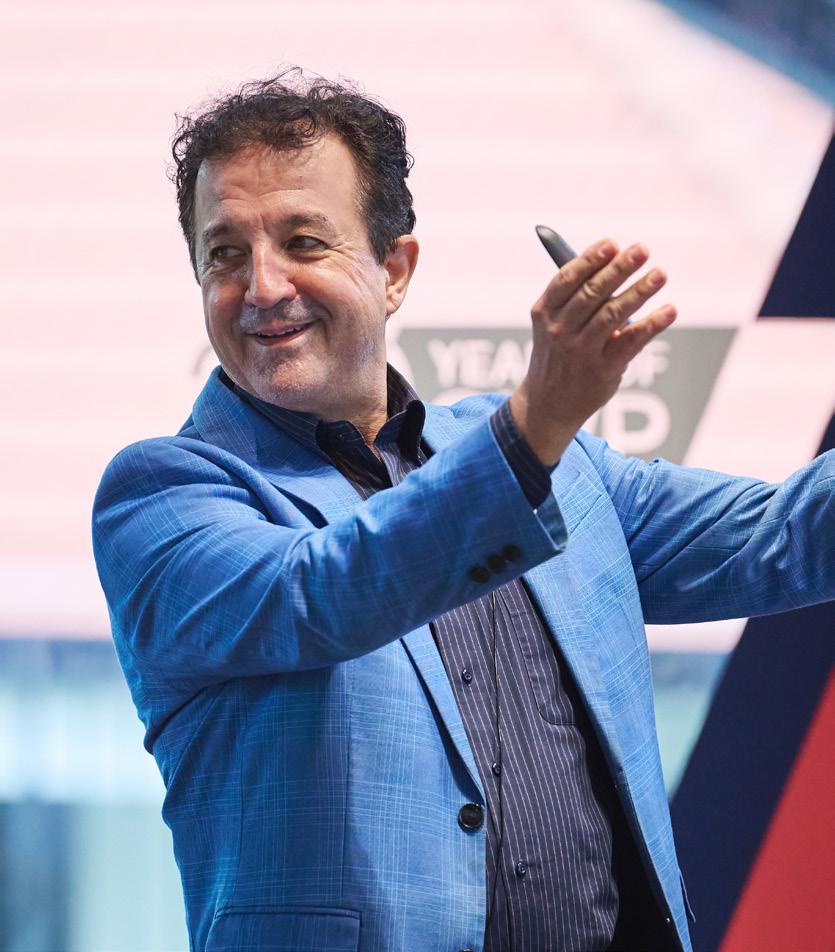
Professor Ric Roi’s session, The mindset of a C-suite leader, explored the critical shifts in mindset and skills required for executives to succeed in C-suite roles. Drawing on IMD’s research and his extensive experience in leadership development, Roi outlined the complexities of transitioning into top leadership positions, emphasizing the need for adaptability, strategic thinking, and emotional intelligence.
The session began by addressing the unique challenges faced by executives entering the C-suite. These include navigating new relationships with senior stakeholders, managing a multifaceted agenda that spans organizational silos, and leading dual transformations – balancing immediate performance with long-term strategic change. Roi stressed that success at this level requires a shift from operational expertise to a broader, more strategic leadership approach.
Central to the discussion were five essential shifts that define effective C-suite leadership: orchestrating strategy, architecting organizational resilience, mobilizing stakeholders, regenerating personal resilience, and amplifying influence. Roi explained that these shifts demand a combination of technical skills, political acumen, and the ability to inspire and align diverse groups. He highlighted the importance of balancing organizational performance with transformation, ensuring adaptability while maintaining focus on results.
Emotional intelligence and self-awareness emerged as key differentiators for successful leaders. Roi emphasized that while traits like ambition and resilience are foundational, emotional intelligence enables leaders to navigate interpersonal dynamics, foster trust, and build coalitions. He also introduced the concept of cognitive range – the ability to think critically and creatively, and to switch between detailed and big-picture perspectives – as a vital skill for addressing complex challenges.
The session also delved into practical strategies for managing stakeholders and building coalitions. Roi introduced the Japanese concept of “Nimawashi”, which involves socializing ideas and gaining informal support before formalizing decisions. This approach helps leaders engage influential sceptics, align stakeholders, and reduce resistance to change.
Finally, Roi underscored the importance of selfregeneration and team renewal. He encouraged leaders to cultivate resilience, maintain energy, and foster optimism to sustain their effectiveness in demanding environments. Authenticity was highlighted as a cornerstone of leadership, with participants urged to embrace their unique styles while continuously refining their skills.
Watch the session highlights

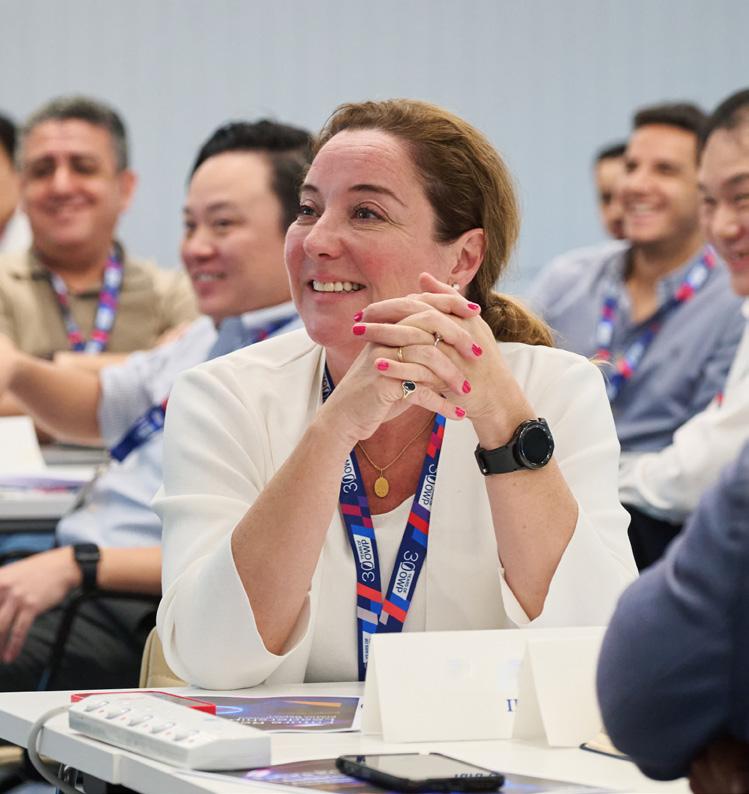
1. Develop emotional intelligence: Invest in building self-awareness and interpersonal skills to navigate complex stakeholder relationships and foster trust. Emotional intelligence is critical for gaining followership and managing resistance.
2. Expand cognitive range: Challenge yourself to think both critically and creatively, switching between detailed analysis and big-picture perspectives. Seek diverse experiences to broaden your strategic thinking capabilities.
3. Master stakeholder engagement: Use approaches like “Nimawashi” to socialize ideas and gain informal support before formalizing decisions. This helps align stakeholders and build coalitions for successful implementation.
4. Balance performance and transformation: Focus on delivering immediate results while driving long-term strategic change. Prioritize adaptability and resilience to ensure sustainable growth.
5. Cultivate personal resilience: Regularly renew your energy and optimism to thrive in demanding environments. Build habits that support self-regeneration and inspire your team to do the same.
By implementing these insights, executives can enhance their leadership effectiveness and navigate the complexities of C-suite roles with confidence.

What our participants say
I have never thought about developing a leadership brand for myself, but OWP taught me that this is actually very important. It’s a must-change mindset. I realize that I need to now focus on the type of leader I want to be and what I need to do to get there.
Tomoya Ogawa Principal Revamp Corporation



Zhike Lei Professor of Leadership and Organizational Behavior






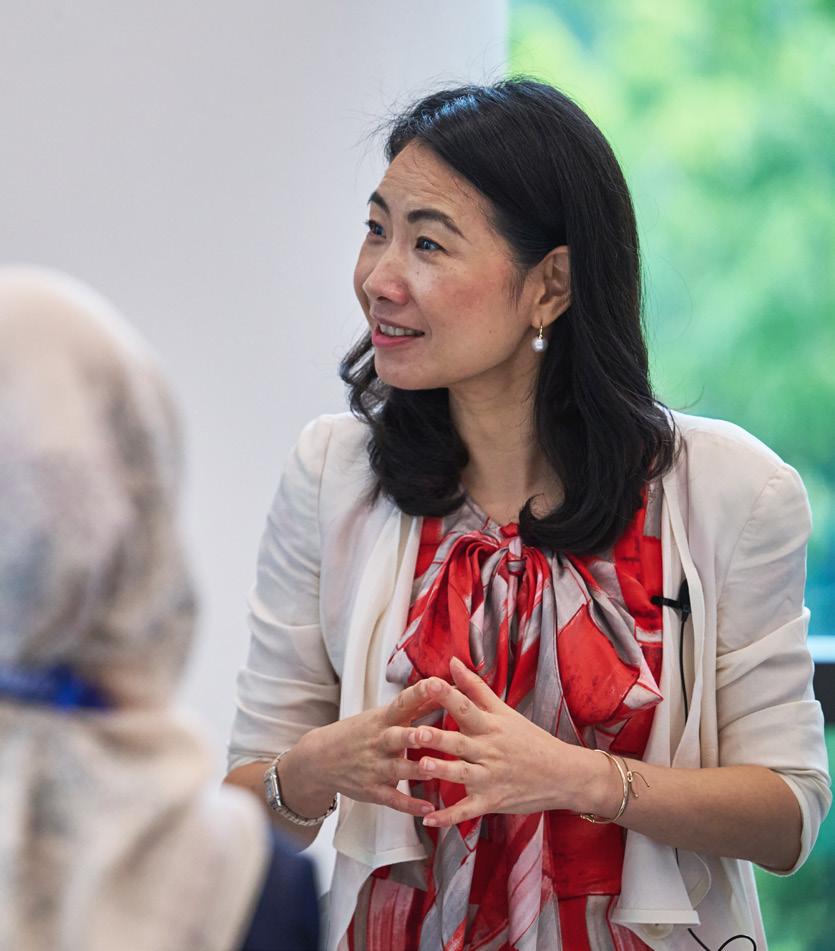
This session explored the critical role of rethinking in leadership, emphasizing the importance of embracing mistakes and challenging assumptions to foster better decision-making and organizational resilience. The session highlighted that the greatest risk for leaders is not making errors but failing to adapt and learn from them. Lei framed rethinking as a leadership skill that requires intellectual humility, curiosity, and psychological safety to thrive in complex and uncertain environments.
The session began by addressing the cognitive and emotional barriers that prevent leaders from rethinking, such as confirmation bias, overconfidence, and fear of failure. These biases often lead to rigid thinking and resistance to change, which can hinder innovation and growth. Lei illustrated these concepts through a case study exercise involving a car racing team deciding whether to participate in a high-stakes race. Participants experienced firsthand how biases and group dynamics influence decision-making, and the exercise underscored the importance of fostering dissent and diverse perspectives to avoid groupthink.
A key part of the session was the connection between the case study and real-world examples, such as the NASA Challenger disaster, which demonstrated the catastrophic consequences of failing to challenge assumptions and address risks.
Lei emphasized the need for leaders to create environments where team members feel safe to voice concerns and challenge prevailing ideas. Psychological safety was presented as a cornerstone for effective collaboration and innovation, enabling teams to navigate uncertainty and complexity more effectively.
The session also provided practical strategies for improving decision-making and leadership practices. These included appointing devil’s advocates to challenge ideas, conducting After Action Reviews to learn from outcomes, and intentionally creating space for diverse opinions. Lei encouraged participants to embrace vulnerability and model humility as leaders, fostering trust and openness within their teams.
The session concluded with reflections on the importance of rethinking as a continuous process rather than a one-time event. Lei urged participants to develop habits of informed skepticism, actively seek feedback, and view mistakes as opportunities for growth. By integrating curiosity and humility into their leadership approach, executives can better navigate the complexities of modern business environments and future-proof their organizations.
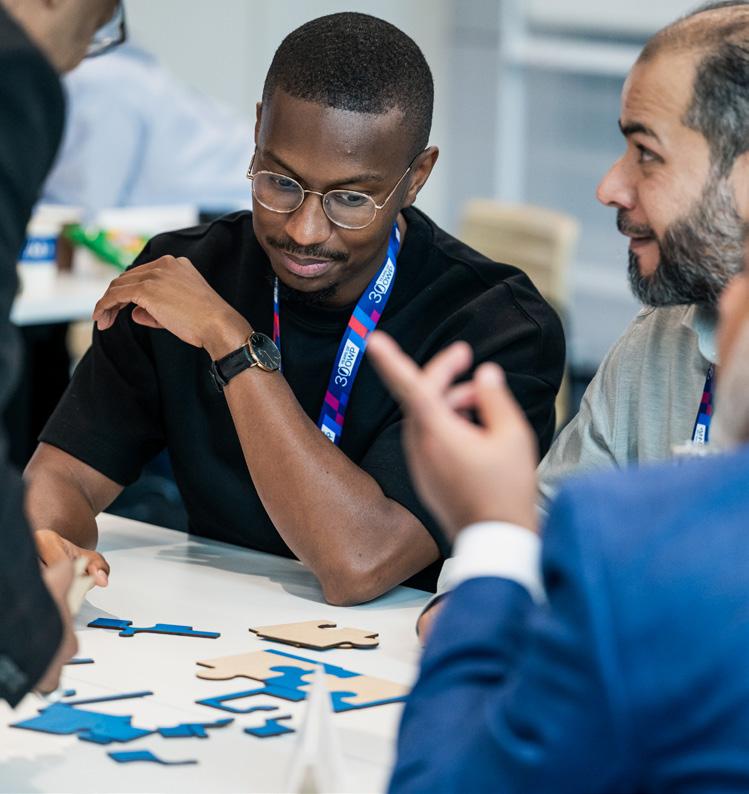
1. Foster psychological safety: Create an environment where team members feel safe to express dissenting views and challenge assumptions. This builds trust and encourages open dialogue, which is essential for innovation and effective decision-making.
2. Appoint devil’s advocates: Assign individuals or teams to critically evaluate ideas and decisions. This practice helps uncover blind spots, reduce groupthink, and ensure a more balanced approach to problem-solving.
3. Conduct after action reviews: Regularly review decisions and outcomes to identify lessons learned. Use these insights to refine strategies and improve future decision-making processes.
4. Model vulnerability and humility: As a leader, openly admit mistakes and demonstrate a willingness to learn. This sets the tone for a culture of continuous improvement and encourages others to do the same.
5. Practice intentional rethinking: Develop habits of pausing to reflect, asking “what if” questions, and seeking diverse perspectives. These practices help challenge entrenched assumptions and adapt to changing circumstances effectively.

Salvatore Cantale Professor of Finance

The session How to sharpen, expand, and multiply, led by Professor Salvatore Cantale, focused on the critical challenge leaders face in balancing the need to deliver short-term results while investing in long-term growth. The session introduced a structured framework to help organizations navigate this tension effectively, emphasizing the importance of aligning current operational excellence with future-oriented strategies.
The session was built around the concepts of “Sharpen”, “Expand”, and “Multiply.” The “Sharpen” phase involves optimizing current operations and ensuring the organization is running efficiently to deliver immediate results. This phase is critical for building a strong foundation and generating the resources necessary for future investments. The “Expand” phase focuses on identifying and pursuing growth opportunities that align with the organization’s core capabilities and market dynamics. This stage is about scaling operations, entering new markets, or innovating within existing ones. Finally, the “Multiply” phase is about leveraging the momentum from the previous stages to achieve exponential growth and long-term sustainability.
To illustrate these concepts, the session used a case study from a multinational corporation in the fast-moving consumer goods (FMCG) industry. This example demonstrated how the company successfully balanced short-term performance with long-term strategic investments. By prioritizing the “Expand” phase, the organization was better positioned to transition into the “Multiply” phase, achieving sustainable growth even in a volatile market environment. The case study highlighted the importance of market positioning, organizational redesign, and adaptability in navigating challenges and seizing opportunities.
The session also emphasized the role of leadership in fostering a culture that supports both immediate execution and long-term innovation. Leaders must create an environment of psychological safety, where teams feel empowered to experiment, learn from failures, and adapt to changing circumstances. This approach ensures that organizations remain agile and resilient in the face of uncertainty.
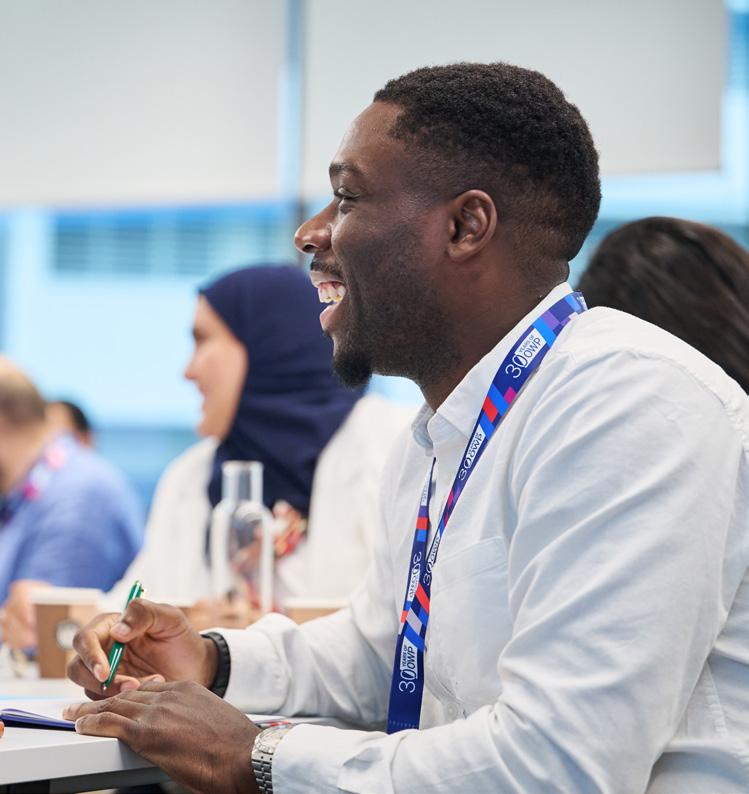
1. Balance short-term and long-term goals: Leaders must develop strategies that address immediate operational needs while allocating resources for future growth. This requires a clear understanding of the organization’s current capabilities and a vision for where it wants to go.
2. Prioritize the “expand” phase: Before aiming for exponential growth, focus on scaling and strengthening the organization’s core operations. This includes identifying new market opportunities, optimizing existing processes, and ensuring the organization is prepared for the next phase of growth.
3. Foster psychological safety: Create a culture where employees feel safe to take risks, share ideas, and learn from failures. This is essential for driving innovation and adapting to market changes.
4. Reframe success as “learning before earning”: Encourage teams to view initial efforts as opportunities to learn and refine strategies, rather than focusing solely on immediate financial returns. This mindset can lead to more sustainable and impactful growth.
5. Leverage case studies for insights: Study successful organizations in your industry to understand how they have navigated the challenges of balancing short-term and longterm priorities. Use these insights to inform your own strategies and decision-making processes.
By applying these principles, executives can better position their organizations to thrive in both the present and the future, achieving sustainable growth and long-term success.

The assessment made me realize that there are five components of leadership; from strategy to execution. It means that we must not only look to the future and decide what we are going to do for the future, we also must make time for execution, in the present time, now.
Anke Subandy Head of Internal Audit

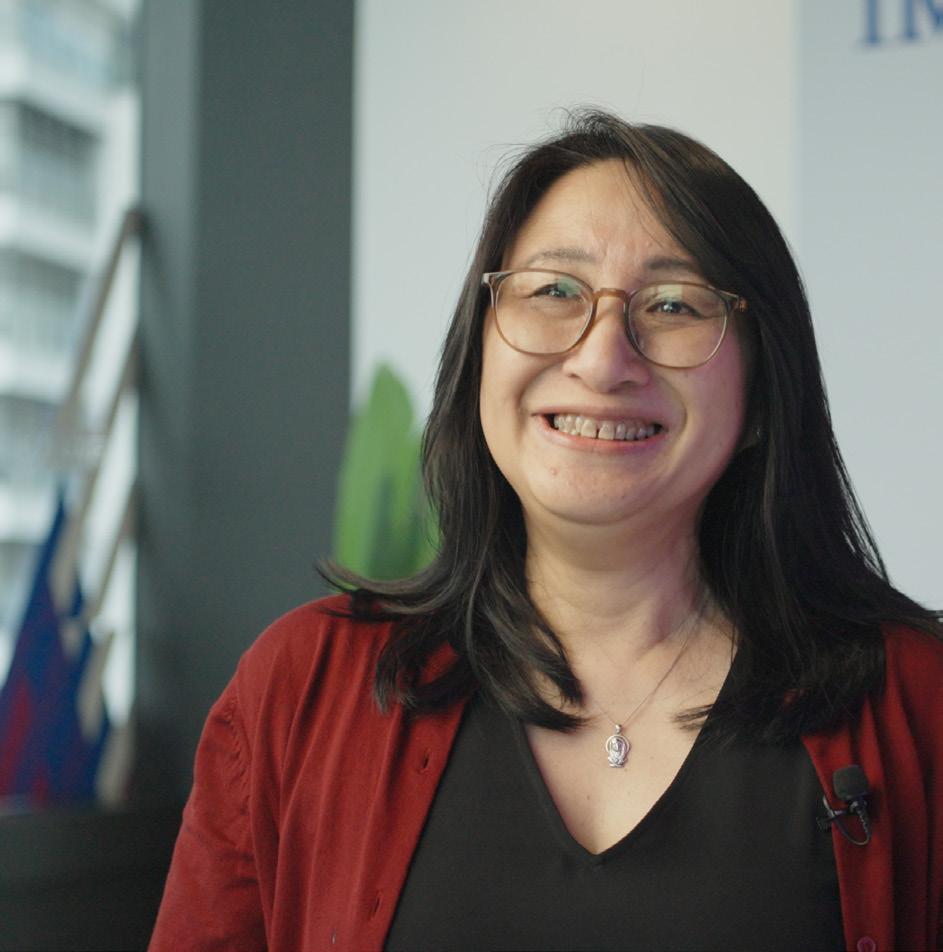


Jennifer Jordan Professor of Leadership and Organizational Behavior







Professor Jennifer Jordan’s session explored the dynamics of power in leadership, focusing on understanding, acquiring, and sustaining power, as well as the critical skill of sharing it effectively. The session began by demystifying the concept of power, which is often seen as an uncomfortable topic. Jordan defined power as the capacity to influence or bring about change, distinguishing between social power (influencing others) and personal power (control over one’s own life). Participants were encouraged to reflect on their own perceptions of power and its implications in their professional and personal lives.
A key theme was the contextual and dynamic nature of power. Jordan emphasized that power is not static; it shifts based on cultural, organizational, and situational factors. She highlighted the importance of understanding the bases of power, such as rank, expertise, reputation, networks, and personal attributes, and how these are valued differently across contexts. Through real-world examples, she illustrated how power dynamics evolve when transitioning between roles, organizations, or cultures.
The session introduced a structured framework for harnessing power, which includes three stages: acquiring power, gaining recognition (status), and exercising leadership. Jordan stressed that power is not just about possession but also about how effectively it is recognized and utilized. A key exercise was the “power audit”, where participants assessed their own power bases, identified gaps, and strategized ways to strengthen or build new sources of influence.
The class also explored the importance of external networks and relationships in sustaining power. Jordan emphasized that power is a tool that can be used for positive impact, and its transformation into effective leadership depends on how it is exercised. The session concluded with a discussion on the balance between holding and sharing power, with participants asked to prepare a reallife dilemma for the next session to explore this topic further.

1. Conduct regular power audits: Executives should periodically assess their power bases – such as expertise, networks, and reputation –especially when transitioning into new roles or environments. This helps identify strengths, gaps, and areas for development to navigate power dynamics effectively.
2. Adapt power strategies to context: Power is dynamic and context-dependent. Leaders must understand the cultural and organizational values that shape power dynamics in their environment and adapt their approach to align with these norms.
3. Invest in relationships and networks: Building and maintaining external networks is critical for sustaining power. Executives should engage in consistent, reciprocal interactions to nurture relationships that can provide support, resources, and influence.
4. Balance power holding and sharing: Effective leaders know when to share power to empower others, free up time for strategic priorities, and build organizational resilience. Executives should identify opportunities to delegate and develop their teams while maintaining overall influence.
5. Transform power into leadership: Power alone does not equate to leadership. Executives must focus on how they exercise power, ensuring it is used ethically and constructively to inspire trust, drive change, and achieve organizational goals.
By applying these insights, executives can better navigate the complexities of power, enhance their leadership impact, and foster a culture of empowerment within their organizations.
How to overcome a power deficit by Jean-Louis Barsoux and Cyril Bouquet
Power is the great motivator by David C. McClelland and David H. Burnham

Zhike Lei Professor of Leadership and Organizational Behavior
Salvatore Cantale Professor of Finance
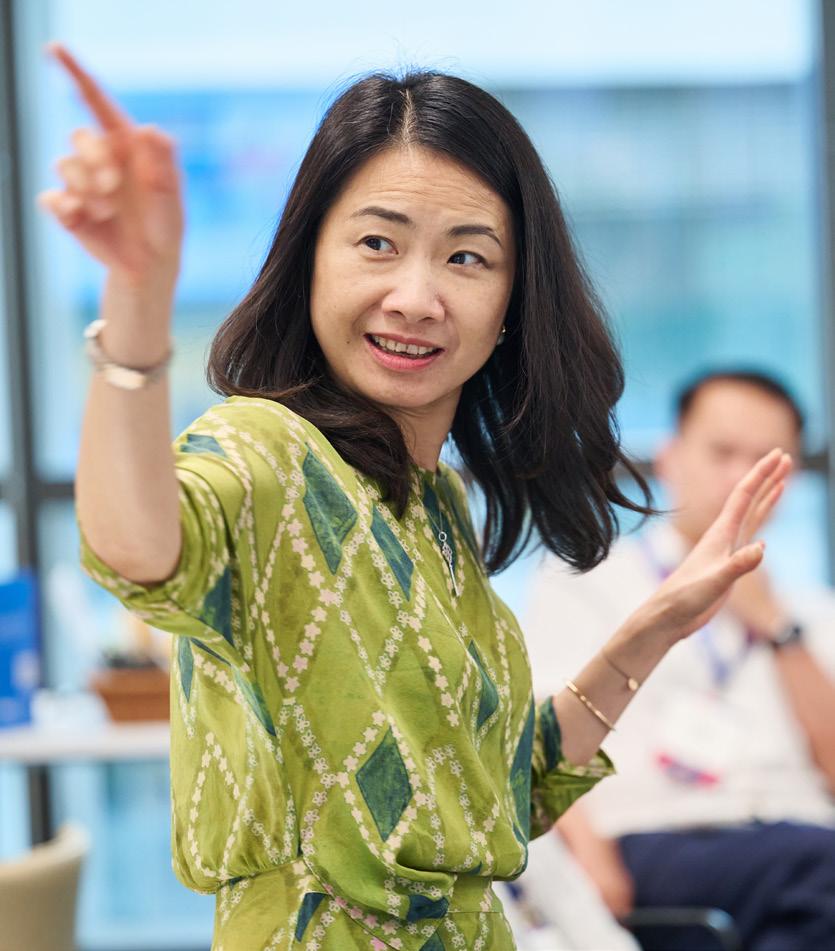
How to disrupt the perfect? Mastering S-curve dynamics in innovative leadership, led by Professors Zhike Lei and Salvatore Cantele, focused on the critical challenge of balancing current business success with the need to embrace innovation and transition to the next growth curve. The session emphasized that while organizations often strive to optimize their existing operations, this focus on perfection can hinder their ability to adapt and innovate, especially in dynamic and competitive environments.
Participants explored the concept of the S-curve, a model that illustrates the lifecycle of business growth, from initial innovation to maturity and eventual decline. The session highlighted the importance of recognizing the right moment to disrupt the status quo and move to the next S-curve before the current one reaches its peak and stagnates. Through robust research, real-world case studies, and an immersive leadership simulation, executives were encouraged to challenge conventional thinking and foster a culture of learning and experimentation within their organizations.
A key case study from Novo Nordisk demonstrated how the company successfully navigated the transition from one S-curve to another by embracing bold decisions and prioritizing longterm innovation over short-term optimization. The session underscored the importance of creating an environment where teams feel psychologically safe to take risks, make mistakes, and learn from them. This approach was presented as essential for driving sustainable growth and transformation.
The leadership simulation provided participants with a hands-on opportunity to practice decisionmaking in complex scenarios, emphasizing the need for calculated risk-taking and strategic foresight. The exercise revealed the challenges of balancing immediate performance pressures with the need to invest in future opportunities. Participants were encouraged to reflect on their own leadership styles and consider how they could inspire their teams to embrace change and innovation.
The session concluded with a discussion on the role of leaders in identifying and seizing opportunities for disruption. Lei and Cantale stressed that innovative leadership requires a mindset shift, moving away from a fear of failure and toward a focus on learning, adaptability, and resilience. By doing so, leaders can position their organizations to thrive in uncertain and rapidly changing markets.
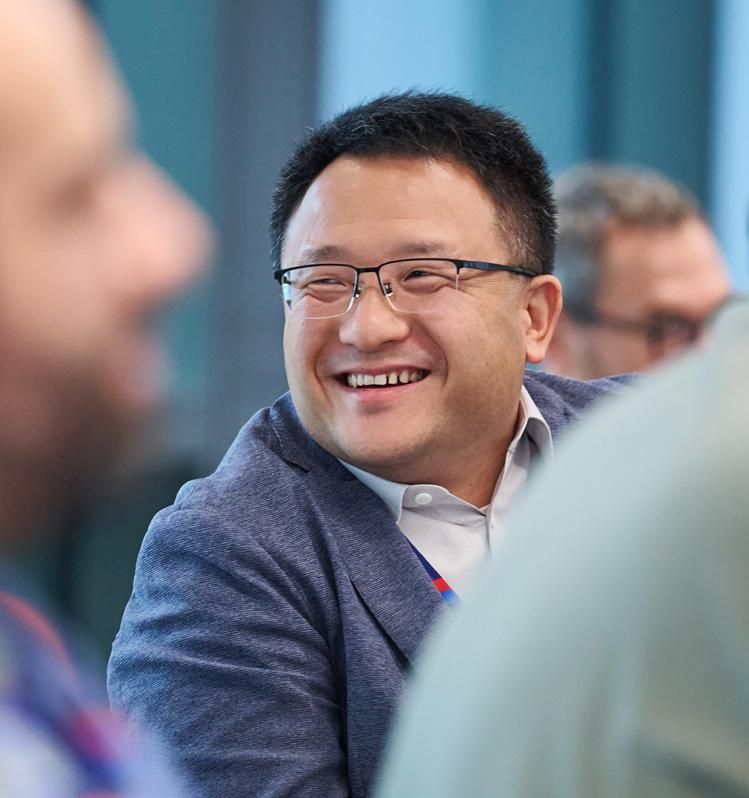
1. Recognize the S-curve dynamics: Understand the lifecycle of your business and identify the signs of stagnation or decline. Proactively plan for the next growth curve before the current one peaks.
2. Foster a learning culture: Create an environment where employees feel safe to experiment, take risks, and learn from failures. Psychological safety is critical for driving innovation and transformation.
3. Challenge the status quo: Encourage teams to question existing processes and assumptions, even when current operations seem optimal. Disruption often begins with challenging “perfect” conditions.
4. Balance short-term and long-term goals: Develop strategies that address immediate performance needs while investing in future opportunities. This requires a clear vision and the ability to prioritize effectively.
5. Lead with courage and resilience: Embrace a leadership style that inspires bold decision-making and adaptability. Be prepared to take calculated risks and guide your organization through uncertainty to achieve sustainable growth.
By applying these insights, executives can better navigate the complexities of innovation leadership and position their organizations for long-term success in an ever-changing business landscape.

We often associate success with perfection. This week made me realize we can actually make mistakes, and in fact there’s actually a lot to learn from mistakes. My mindset has shifted from being a perfectionist leader to being a human leader who makes mistakes and embraces them.
Lebo Thubakgale
Senior Marketing Manager
ABSA Bank





Watch
Poman Lo
Vice Chairman and Managing Director of Regal Hotels International
The climate crisis is testing leaders like never before. Poman Lo, Vice Chairman and Managing Director of Regal Hotels International, calls for purpose, not profit, to guide Asia’s transformation toward a greener, more resilient future.
Every generation faces a defining test of leadership. Ours is the climate crisis – the ultimate measure of foresight, courage, and collective will. From record-breaking heatwaves to biodiversity loss and economic instability, the planet’s warning signs are growing louder.
Each year, we emit over 50 billion tonnes of greenhouse gases, and we have already consumed more than 1.7 times the Earth’s regenerative capacity. If we continue at this pace, by 2050, there will be more plastic than fish in the ocean.
Global temperatures have already risen by 1.5°C, one million species face extinction, and Asia, home to 60% of the world’s population, accounts for more than half of global emissions. As leaders, we must confront these realities head-on: not as an act of charity, but of strategy. This begins with establishing clarity on why we must act, what transformation is needed, and how we can drive it at scale.
The “why” is survival: the climate crisis demands urgent, systemic change. The “what” is opportunity: to reimagine growth through innovation and inclusion, redefining prosperity to sustain rather than deplete. And the “how” is purpose: aligning profit with impact, competition with collaboration, and vision with action.
Purpose is far more than a corporate slogan; it is the organizing principle that aligns strategy, culture, and execution. I have witnessed how a clear purpose can drive measurable transformation in my role as Vice Chairman and Managing Director of Regal Hotels International, and as Founder of the One Earth Alliance – a collaborative platform uniting investors, corporations, philanthropists, and policymakers to accelerate sustainable impact across Asia.
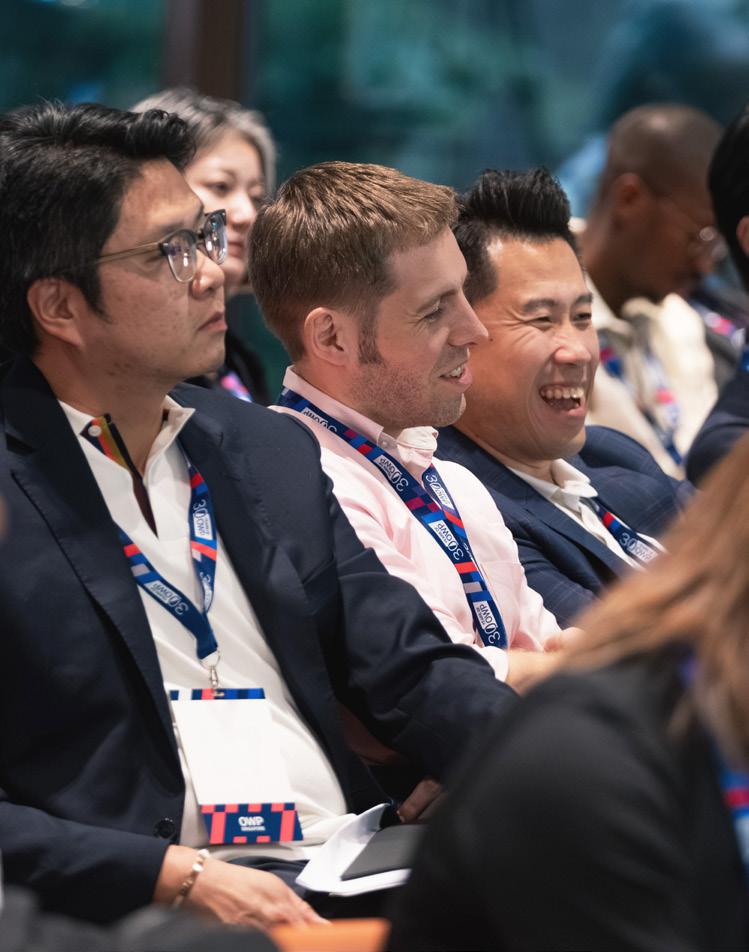
The hospitality sector is among the most energy-intensive industries in the world, yet that also makes it one of the most powerful levers for change. In our hotels, we have sought to demonstrate that sustainability and service excellence can go hand in hand.
Across our operations, we’ve eliminated millions of plastic bottles through filtration systems and reusable flasks, reimagined buffet models to reduce waste, and partnered with universities to convert food waste into energy and eco-bricks. These steps are not endpoints, but starting points: proof that collective intention, anchored in purpose, can reshape entire industries.
Our 10-year decarbonization plan, aligned with SBTi standards, now tracks progress across Scope 1–3 emissions to ensure accountability. Because measuring impact is as important as making it. Without transparent data, good intentions can lose credibility. Clear metrics allow us to channel resources where they matter most, turning purpose into disciplined innovation, and innovation into long-term value creation.
In the age of AI, ESG scrutiny, and rising social awareness, the definition of leadership is being rewritten. Today’s leaders must balance technological ambition with human empathy. Technology – perhaps our greatest hope –can decarbonize even the hardest-to-abate sectors, at speed and at scale. Yet it cannot, on its own, inspire trust or cooperation. The
pollution we see in the world is a reflection of the imbalances within our own mindset, a reminder that cultural transformation is as essential as technological innovation.
Nowhere is this dual challenge more evident than in Asia, which represents both the greatest risk and the greatest opportunity for global climate action. Singapore’s operational excellence and research capabilities complement Hong Kong’s strength as a green finance hub, together forming the foundation of a regional ecosystem for sustainable innovation. In this context, collaboration becomes the true currency of progress, enabling shared solutions that transcend borders and scale across industries.
For business, this is not idealism but realism. Talent is motivated by values. Investors reward transparency. Consumers reward authenticity. Companies that embed purpose attract both the people and the capital they need to thrive.
From pioneering one of Hong Kong’s first carbon-neutral hotels 15 years ago to advancing sustainable innovation and investment, I have seen firsthand that purpose and profit are not opposites but partners. When aligned, they create a powerful engine for innovation, resilience, and sustainable growth, the new leadership imperative for our time.
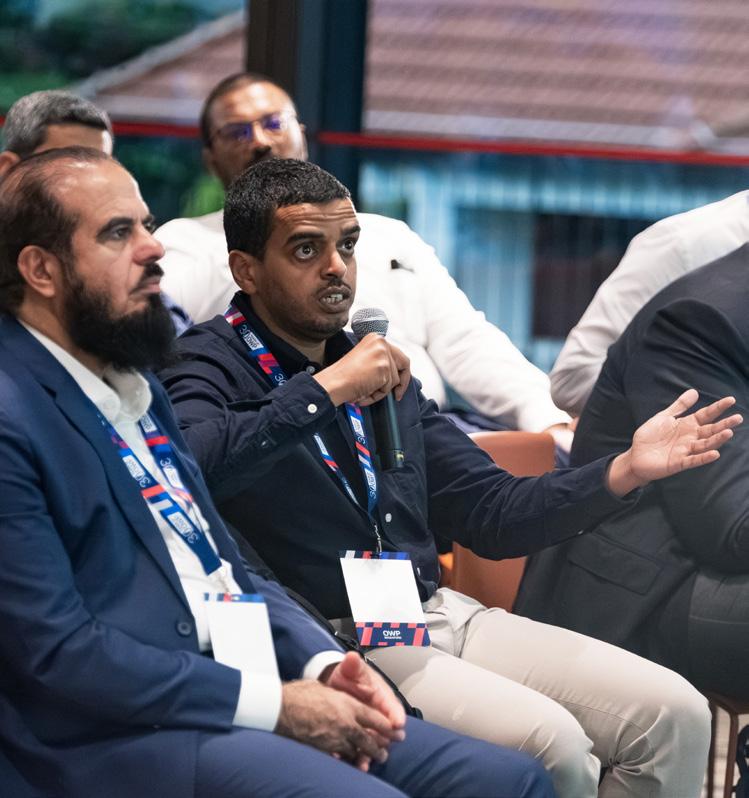
Turning purpose into practice demands structural change. Purpose must be hardwired into the system: into governance, incentives, and daily operations that reinforce long-term vision. Across our properties, climate risk assessments and datadriven retrofits turn ambition into accountability. Yet no company can transform an industry alone.
When we debated whether to replace plastic bottles with alternative formats, cost was a major barrier – until the entire hotel sector made a collective commitment to go plasticfree. Collaboration has always been at the heart of my leadership philosophy.
From guest behavior to boardroom decisions, purpose can be designed into every layer of strategy. When guests become aware of their energy use, they naturally begin to conserve more. Incentives such as loyalty points for skipping housekeeping turn values into daily habits. Purpose must live in systems, not slogans.
The One Earth Alliance brings together stakeholders in measurable, crosssector
collaboration,
because purposedriven investing should make the right choice, the easy choice.
In a world defined by volatility and uncertainty, purpose provides clarity.
We stand at a critical juncture in human history. The path forward is collective. We must rise above artificial boundaries and join forces. For leaders, that means treating sustainability not as a department but as a direction: a compass for innovation, inclusion, and resilience.
Leadership is about contribution, not control. When purpose becomes our compass, performance follows. Together, we can co-create a brighter, more sustainable future for all.



Marleen Dieleman
Peter Lorange Family
Business Professor






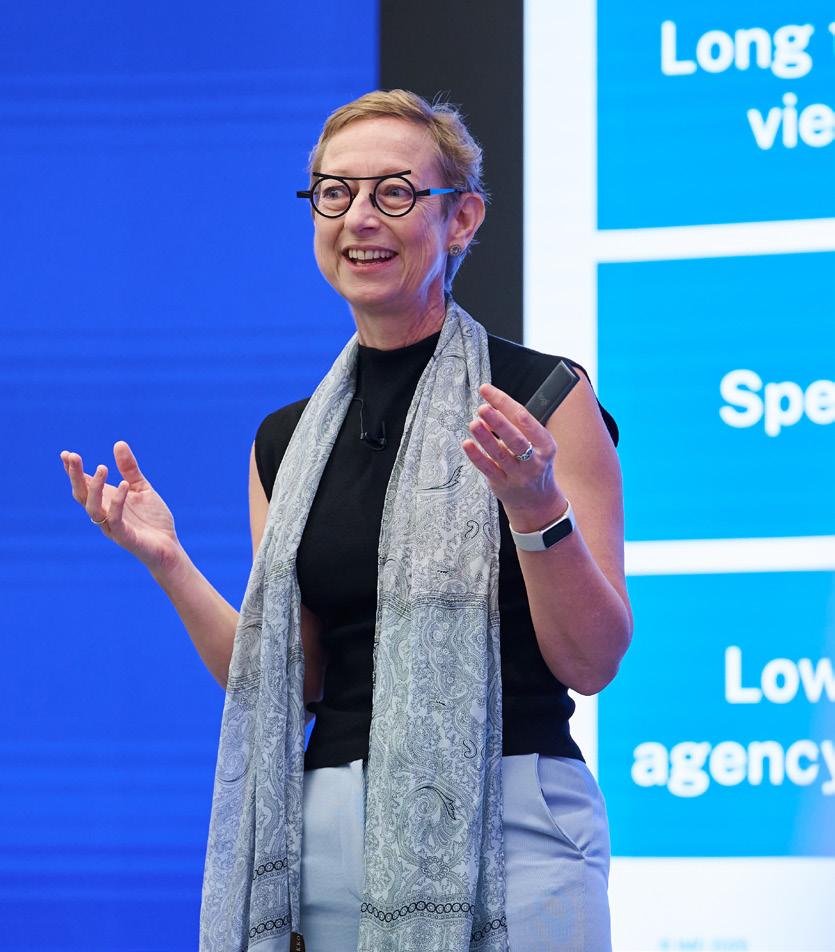
Professor Marleen Dieleman’s session explored the unique dynamics, strategies, and lessons from Asian family businesses, particularly those of Chinese descent in Southeast Asia. These enterprises are renowned for their resilience, long-term vision, and ability to navigate complex environments, making them valuable models for executives seeking sustainable success. The session emphasized the importance of understanding cultural context, intergenerational leadership, and governance structures that underpin the longevity of these businesses.
A key focus was on the cultural and emotional nuances that drive decision-making in family businesses. Unlike Western corporate models, Asian family enterprises often prioritize relationships, trust, and legacy over shortterm financial gains. This approach fosters stability and adaptability, especially in fragmented or uncertain markets. Dieleman highlighted how these businesses balance tradition with innovation, leveraging their deep-rooted values while embracing modern practices to remain competitive.
The session also addressed the challenges faced by family businesses, such as succession planning, governance, and preparing the next generation for leadership. Effective governance
structures, including family councils and clear succession plans, were presented as critical tools for ensuring continuity and mitigating conflicts. Additionally, the role of external stakeholders – banks, policymakers, and business partners – was discussed, emphasizing the importance of building trust and aligning with the long-term goals of family enterprises.
To help executives stay grounded in a rapidly changing world, Dieleman introduced three key leadership competencies: attending, embodying, and appreciating. These competencies, rooted in mindfulness, were presented as essential for navigating complexity and fostering resilience. By integrating these practices, leaders can enhance their ability to connect with diverse stakeholders, make thoughtful decisions, and sustain organizational success.
The session concluded with practical insights and tools for executives to apply in their own roles and organizations, encouraging them to learn from the strengths and strategies of Asian family businesses while adapting them to their unique contexts.
Watch the session highlights

1. Prioritize relationship-building and trust: Asian family businesses thrive on strong relationships and trust, both within the family and with external stakeholders. Executives should focus on cultivating long-term partnerships and fostering trust-based interactions, which can lead to greater stability and collaboration in uncertain markets.
2. Adopt a long-term vision: These businesses often prioritize legacy and sustainability over shortterm gains. Executives can implement strategies that emphasize long-term growth, balancing immediate profitability with investments in innovation, talent development, and resilience.
3. Strengthen governance and succession planning: Clear governance structures and succession plans are critical for continuity. Executives should establish frameworks that address leadership transitions, mitigate conflicts, and prepare the next generation for success, ensuring organizational longevity.
4. Leverage cultural context in decision-making: Understanding cultural nuances is essential when working with or learning from Asian family businesses. Executives should develop cultural intelligence to navigate diverse environments effectively, aligning their strategies with local values and practices.
5. Integrate mindful leadership practices: The competencies of attending, embodying, and appreciating can help leaders stay grounded and resilient. Executives should incorporate mindfulness into their leadership styles to enhance decisionmaking, foster collaboration, and adapt to complexity.
By applying these insights, executives can strengthen their organizations, build meaningful partnerships, and drive sustainable success in dynamic and fragmented markets.
Generational wealth: Embracing ‘Lotus’ model for family business succession by Marleen Dieleman

Niccolò Pisani Professor of Strategy and International Business
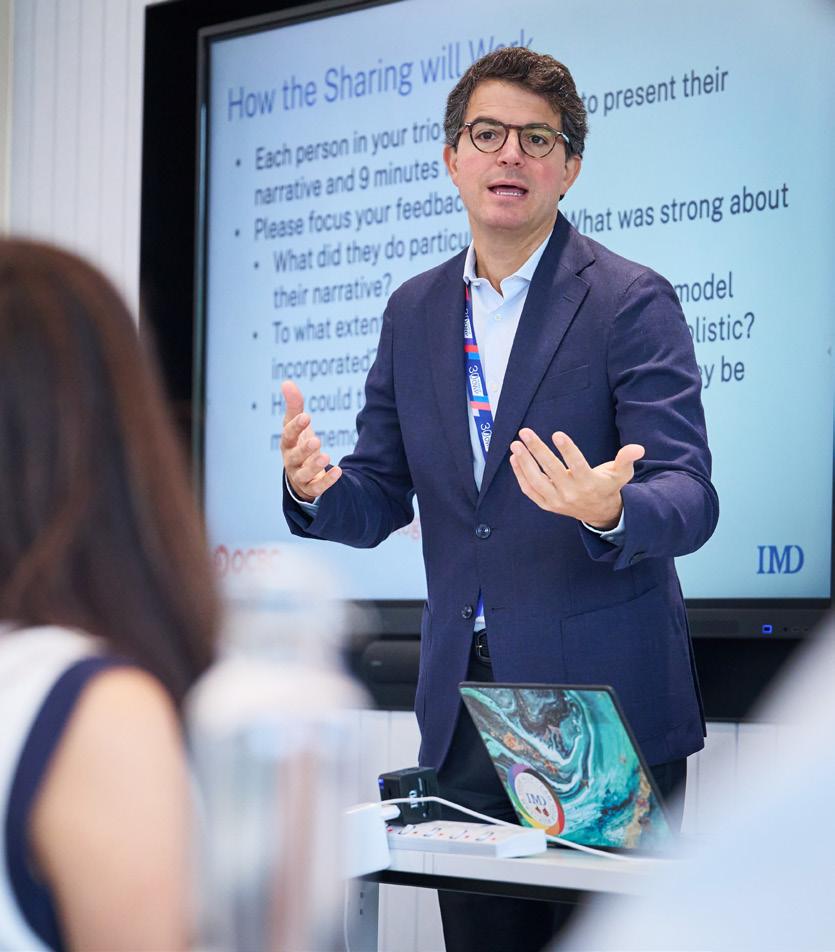
In the session How to develop international strategies in a fragmenting world, Niccolò Pisani explored the challenges and opportunities of crafting effective global strategies in an increasingly fragmented geopolitical and economic landscape. The discussion centered on how multinational corporations (MNCs) can adapt to a world characterized by regionalization, geopolitical tensions, and shifting trade patterns. Pisani emphasized the need for flexibility, innovation, and resilience in navigating these complexities.
The session began by examining the stagnation of global trade as a percentage of GDP since 2008, with a notable shift toward services – particularly digitally delivered services – outpacing goods in growth. Pisani highlighted the rise of “friendshoring”, where companies prioritize trade within geopolitically aligned regions, leading to increased intra-regional trade and reduced cross-block interactions. This trend underscores the importance of regional strategies tailored to specific markets.
Foreign direct investment (FDI) patterns were also discussed, with Pisani noting a decline in global FDI since its peak in 2014-2015. He attributed this to geopolitical uncertainty, inflationary pressures, and a preference for investments closer to home. The session highlighted the shift in China’s role from a major FDI recipient to a net exporter of capital, particularly in strategic industries, reflecting broader changes in global investment flows.
Pisani used case studies, including Walmart’s struggles in international markets, to illustrate the complexities of global expansion. He emphasized that success abroad requires a deep understanding of local competition, consumer preferences, and cultural nuances. The discussion also touched on the growing importance of services and technology-driven offerings in global strategies, as well as the need for companies to prioritize de-risking and resilience in their operations.
The session concluded with a focus on actionable strategies for MNCs to thrive in a multipolar world. Pisani encouraged participants to rethink their approaches to international growth, emphasizing the need for regionalization, portfolio diversification, and partnerships over large-scale acquisitions. He also stressed the importance of agility and adaptability in responding to an unpredictable global environment.

1. Adopt regional strategies: Shift from a onesize-fits-all global approach to region-specific strategies. Tailor offerings, partnerships, and operations to align with the unique economic, cultural, and geopolitical dynamics of each region.
2. Focus on services and technology: Deepen your organization’s emphasis on services, particularly those that can be digitally delivered. This shift not only aligns with global trade trends but also enhances resilience in volatile markets.
3. Prioritize de-risking and resilience: Build resilience into your supply chains, R&D, and technology investments. Focus on reducing exposure to geopolitical risks by diversifying suppliers and operations across aligned regions.
4. Leverage local partnerships: Instead of pursuing large cross-border acquisitions, explore partnerships, joint ventures, and spin-offs. These approaches allow for greater flexibility and alignment with local market conditions.
5. Monitor and adapt to geopolitical shifts: Stay informed about geopolitical developments and their impact on trade and investment flows. Use this knowledge to proactively adjust strategies, ensuring your organization remains agile and competitive in a fragmented world.
How companies profit from an international C-Suite
by Niccolò Pisani and Ivy Buche
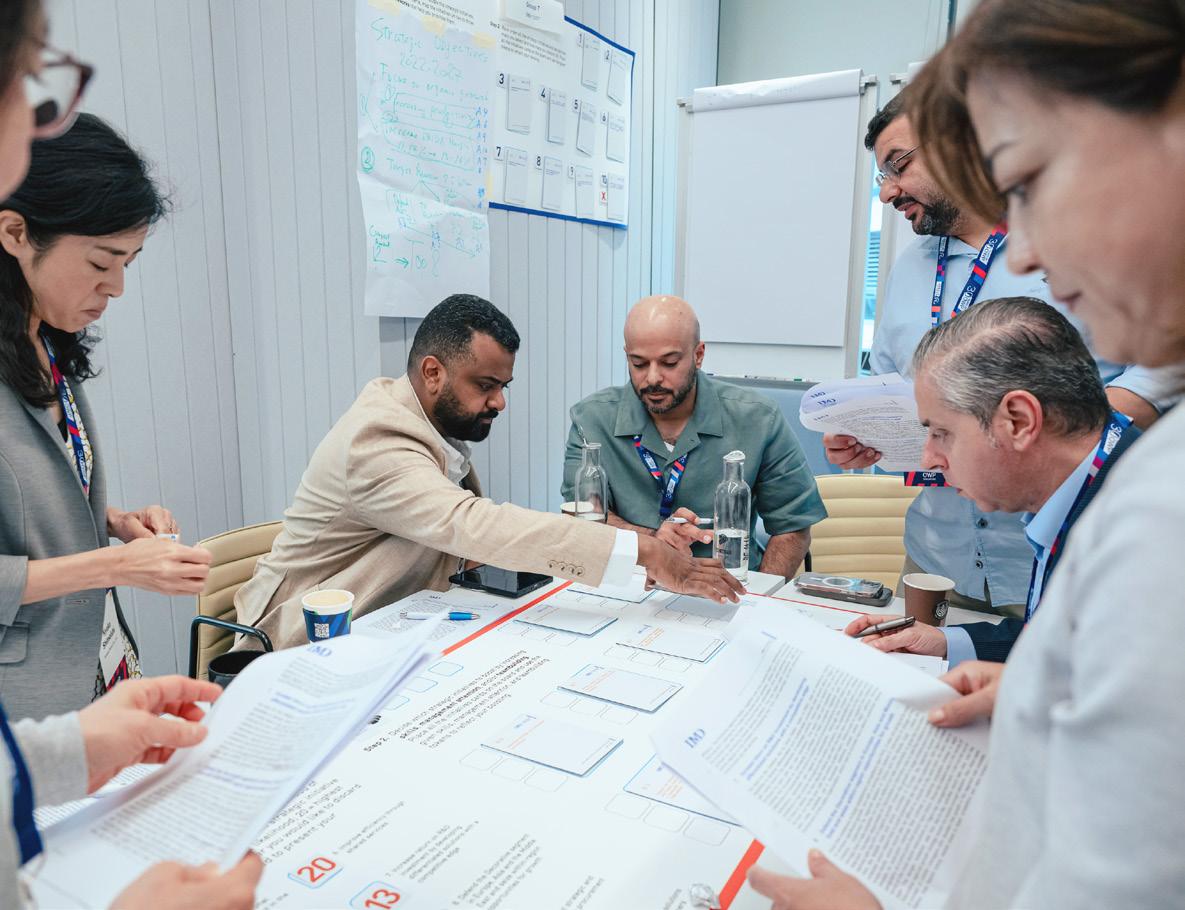
As the first OWP session, this was a timely reminder of what successful strategies look like – and how they can inspire us in the non-profit sector to stay focused on impact.
Tanya Chetcuti Head of Unit
DIGIT
European Commission




Knut Haanaes
Professor of Strategy and Lundin Chair
Professor of Sustainability







Led by Professor Knut Haanaes, this session explored the critical role of leadership in driving sustainable business transformation, emphasizing the integration of strategy, leadership, and actionable execution. Haanaes began by sharing his professional journey, highlighting his transition from strategy to sustainability due to its growing importance and potential for long-term impact. Using a personal kayaking story, he illustrated the need for a clear vision and long-term perspective when navigating complex challenges, likening sustainability to balancing immediate actions with future goals.
The session framed sustainability as a leadership challenge requiring alignment of the “head” (strategic priorities), “heart” (inspiring leadership), and “hands” (actionable execution). Participants discussed the evolution of sustainability from a government-driven initiative to a business imperative, driven by factors such as customer demand, resource scarcity, regulatory pressures, and climate change. Haanaes differentiated between ESG (Environmental, Social, Governance), which is investor-focused, and sustainability, which is strategy-driven and operationally integrated. He emphasized the need for businesses to move beyond branding and reporting to embed sustainability into their core operations for long-term value creation.
A key exercise involved identifying and prioritizing sustainability trends based on their business impact and level of disruption. Trends such as decarbonization, circular economy models, and AI for sustainability were discussed, highlighting their transformative potential. Participants were encouraged to focus on high-impact, disruptive trends while maintaining awareness of less critical ones. This exercise underscored the importance of aligning sustainability efforts with broader business strategies and preparing for future opportunities.
The session also addressed the challenge of balancing short-term and long-term goals. Haanaes introduced the concept of balancing “exploitation” (improving current operations) and “exploration” (innovating for the future). He cautioned against the “success trap” of focusing solely on short-term gains and the “search trap” of overemphasizing long-term innovation. Using examples from nature and business, he illustrated the importance of deliberate leadership in maintaining this balance.
The session concluded with reflections on the role of leadership in driving transformation. Leaders must foster innovation, build new capabilities, and create a culture of exploration while ensuring immediate performance. Haanaes encouraged participants to view sustainability as a continuous journey rather than a series of isolated actions. The session ended with a preview of the next day’s focus on envisioning the future and applying these principles in practice.

1. Embed sustainability into strategy: Move beyond ESG reporting and branding to integrate sustainability into core business operations. Treat it as a strategic priority that drives long-term value creation.
2. Prioritize disruptive trends: Focus on high-impact trends like decarbonization, circular economy models, and AI for sustainability. Use these as opportunities to innovate and differentiate your business.
3. Balance exploitation and exploration: Avoid the “success trap” of short-term focus and the “search trap” of overemphasizing long-term innovation. Deliberately balance immediate improvements with future exploration.
4. Foster a culture of ownership: Engage employees at all levels to take ownership of sustainability initiatives. Avoid overly centralized efforts that can hinder genuine organizational engagement.
5. Lead with vision and action: Align the “head” (strategy), “heart” (leadership), and “hands” (execution) to drive sustainable transformation. Inspire your team with a clear vision while taking deliberate, actionable steps.



Stefan Michel Professor of Management, Dean of Faculty and Research






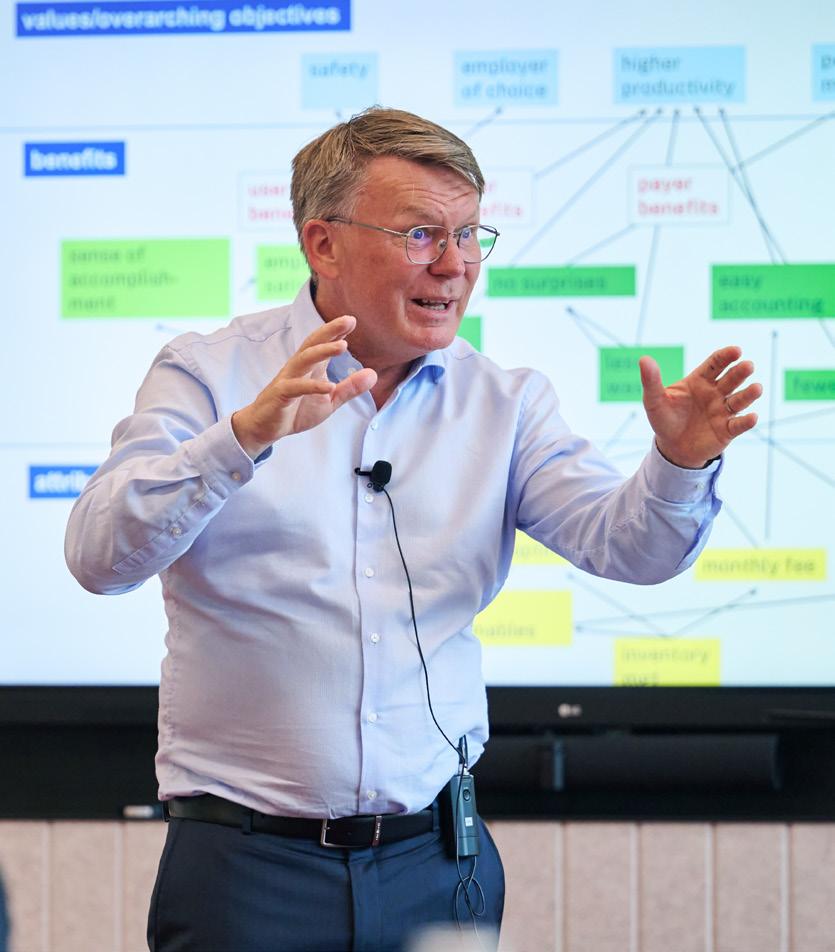
Led by Professor Stefan Michel, this session focused on strategies for driving revenue growth in challenging market conditions by adopting a customer-centric approach. The discussion emphasized the importance of understanding customer needs, aligning organizational efforts to deliver value, and transitioning from product-focused to solutionoriented business models. Michel shared his extensive experience in academia and business, setting the stage for actionable insights on creating and capturing value.
The session introduced the Customer STAR model, a practical framework for systematically identifying growth opportunities. Participants explored how businesses can differentiate themselves by focusing on customer benefits and values rather than product attributes. Through case studies from both B2B and B2C sectors, such as Hilti and Bossard, the class demonstrated how companies can thrive by addressing customer pain points and co-creating value.
Hilti’s transition from selling tools to offering fleet management solutions highlighted the importance of understanding customer challenges, such as downtime and inventory inefficiencies, and providing tailored services to solve them. Similarly, Bossard’s evolution from distributing fasteners to offering engineering and logistics solutions showcased how companies can succeed in commoditized markets by focusing on productivity and efficiency gains for customers.
Michel also addressed the challenges of transitioning to service-oriented models, including internal alignment, pricing complexities, and the risk of a temporary profitability dip during the shift. He introduced a checklist of readiness factors – offering, supplier, customer, and contract – to assess the viability of solutions and ensure smooth implementation.
The session emphasized the distinction between value propositions and brand promises. While brand promises are broad and long-term, value propositions are specific, tailored to individual stakeholders, and context dependent. Participants learned how to craft compelling value propositions by linking customer values, benefits, and attributes, enabling companies to compete on value rather than price.
Organizational alignment was another key theme. Michel stressed the importance of aligning products, operations, IT systems, and company culture around customer needs. Using McDonald’s as an example, he illustrated how consistent alignment across all dimensions ensures customer satisfaction and operational efficiency.
The session concluded with actionable insights on how executives can drive customer-centric revenue growth by fostering resilience, leveraging co-creation, and aligning their organizations to deliver value effectively.
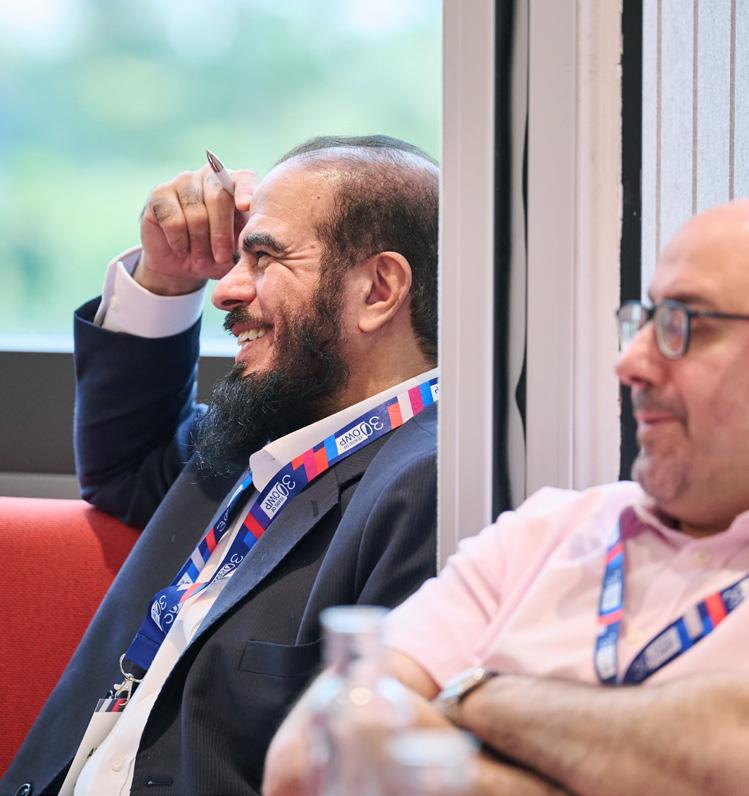
1. Adopt a customer-centric mindset: Shift focus from selling products to solving customer problems. Understand customer pain points and tailor solutions to address them effectively.
2. Craft clear value propositions: Develop specific, stakeholder-focused value propositions that link customer values, benefits, and attributes. This helps differentiate your offerings and compete on value rather than price.
3. Assess readiness for transition: Use the four readiness factors – offering, supplier, customer, and contract – to evaluate the feasibility of transitioning to service-oriented models and mitigate risks during implementation.
4. Leverage co-creation: Engage customers in the development of solutions to ensure alignment with their needs and create mutual value. This strengthens relationships and drives loyalty.
5. Align organizational dimensions: Ensure that all aspects of your business – products, operations, IT, and culture – are consistently aligned with customer-centric strategies to deliver seamless value and enhance operational efficiency.
Create a 1-page marketing plan with better customer insights by Stefan Michel and Lisa S. Duke

We learnt different ways of being customer centric for an organization and what it really means to collaborate as a team coming from different functions and different perspectives, that we can grow together and be better together as a company.
Stephanie Chia
Executive Director, Group Strategy & Transformation Office
OCBC

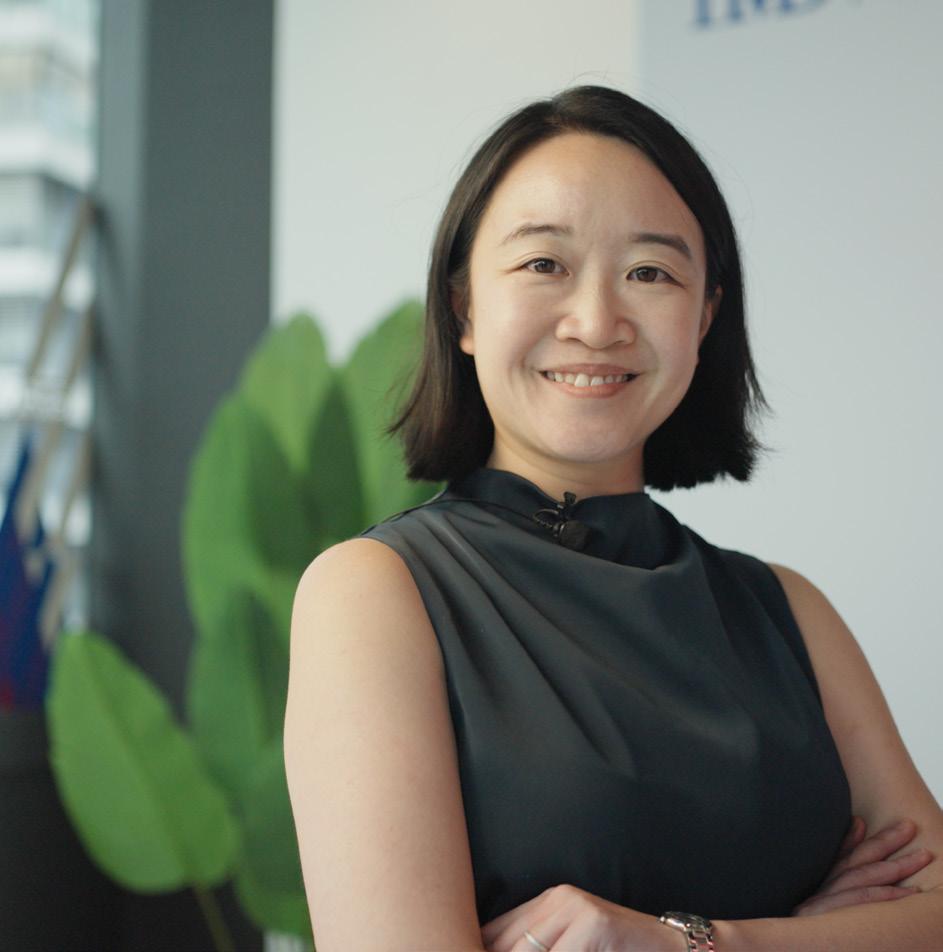

Chef Pam’s journey from a forgotten family building to global recognition reveals a timeless lesson in leadership: that creativity, connection, and simplicity can turn pressure into possibility.
When Pichaya (“Pam”) Utharntharm first stepped into her family’s long-abandoned pharmacy in Bangkok’s Chinatown, the rooms were cluttered with boxes of old books and relics her grandfather had locked away decades earlier. Where many would have seen a crumbling building at the end of a narrow, chaotic alley, she saw possibility. Five years later, that same space – Potong – ranks among Asia’s most celebrated restaurants, a living testament to how vision, patience, and simplicity can turn legacy into leadership.
Named the World’s Best Female Chef 2025, Utharntharm, who is more famously known as Chef Pam, has built far more than a Michelinstarred restaurant. She has created a philosophy of leadership grounded in story, emotion, and meaning – a belief that memory can become strategy, that simplicity demands mastery, and that loyalty begins with trust and purpose.
When her parents first suggested reclaiming the 120-year-old family building, Utharntharm hesitated. The location was far from ideal: “a small road, no parking, not a luxury area for fine dining”, she recalled. But the moment she climbed from the first floor to the rooftop, she felt a connection that would shape her future.
“I wanted to create a cuisine and leave my legacy by respecting my heritage”, she said. The connection she felt to the space became her source of purpose.
The restoration began in 2019, just before the COVID-19 pandemic, and it quickly became both a creative and personal test. Renovating a historic building, she learned, “takes more money than building a whole new one”, and required years of commitment before the doors ever opened. Those constraints brought clarity. What started as a family project became a metaphor for transformation, reviving not just a space, but a sense of identity.
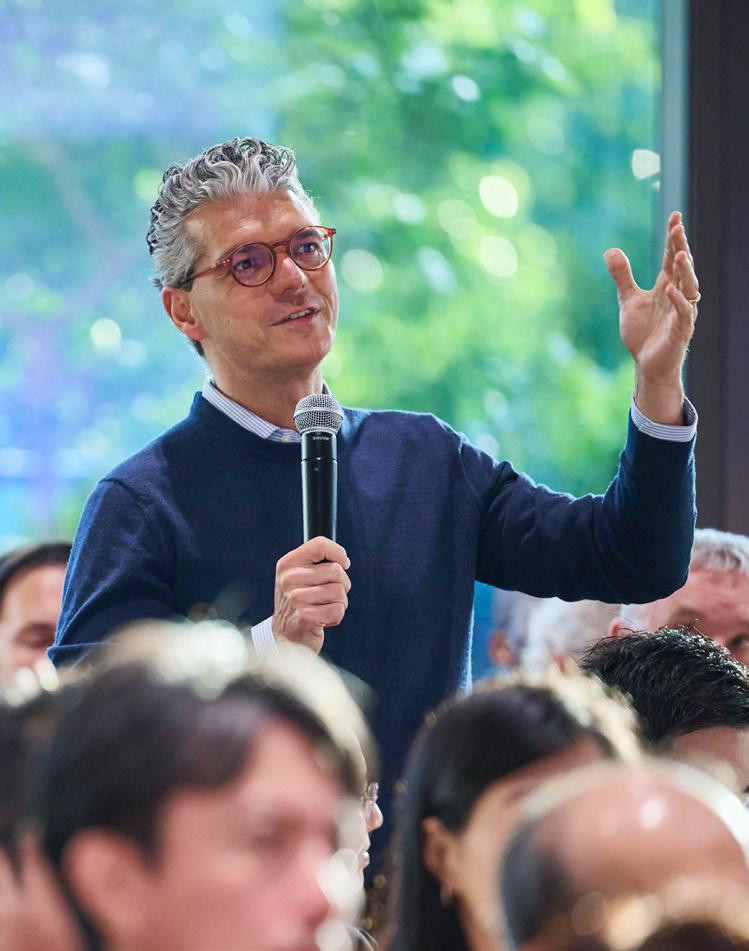
In business terms, it was a lesson in purposedriven reinvention – transforming what she inherited into something entirely new. By anchoring innovation in heritage, she turned constraints into a catalyst for creativity.
What sets Potong apart, Utharntharm explained, isn’t only the food. It’s the emotional connection that lingers long after the meal. “Great food you can find anywhere”, she said, “but food that really sticks in your head, you remember that moment. That’s what we want to create.”
Her idea of hospitality came from a parenting book she read while pregnant. “It said that if you want a child to remember an apple, you can’t just show a picture. You need to let them see, smell, touch, and taste it”, she recalled. From this insight grew her five-senses philosophy, where each guest’s journey, from street to rooftop, becomes an act of immersion.
At Potong, every detail evokes memory and emotion: the historic building, the changing menu, even a letter to her ancestors printed on each place setting, connecting its guests across cultures. Her approach shows that real engagement begins with emotion – loyalty you feel long before you understand it.
“Potong” means “simple” in Chinese: a name that reflects her belief that true innovation begins with simplicity. Early in her career, she admitted, she wanted to impress by adding more to the plate. “When you graduate from culinary school, you want 20 things on a plate”, she said. “But as you grow, you put less and less. Simple doesn’t mean easy. The simpler you go, the more perfect you need to be.”
Her celebrated reinterpretation of Pad Thai, inspired by a design-thinking session with her husband and team, is a study in disciplined creativity. “To create something new and unique is very hard”, she said. “We failed so many times, but that’s how the best ideas are born.”
Behind the art, she emphasized, lies structure. “Sometimes art and structure have to meet in the middle”, she said. “That’s what business is: opening a restaurant, you need an artist’s side and a structure to support that art.”
For leaders, it’s a reminder that focus is strength. Simplicity, she believes, isn’t the opposite of ambition – it’s what reveals it.
We failed so many times, but that’s how the best ideas are born.
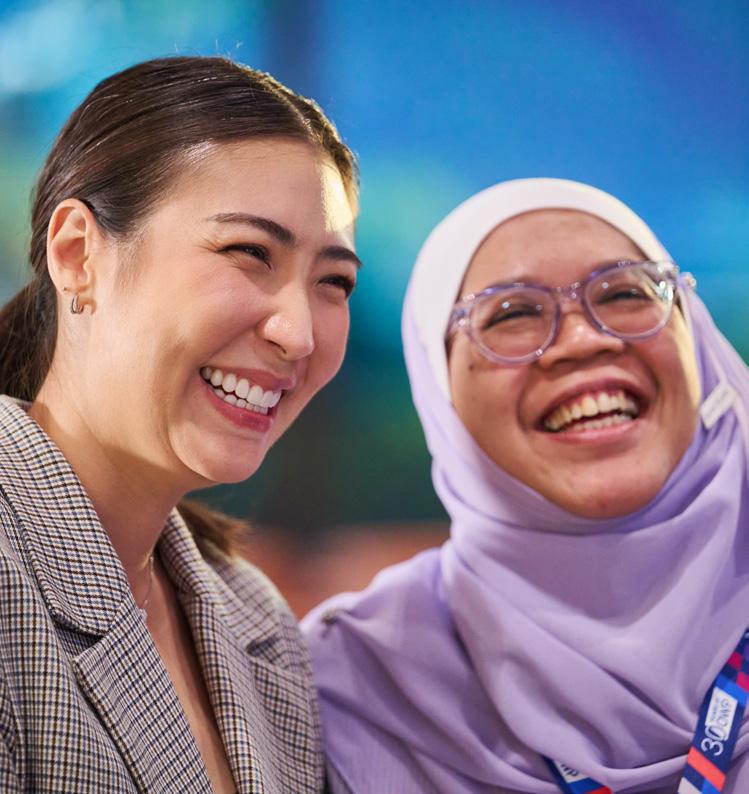
In the early days, Utharntharm found it difficult to delegate. “I liked to do things myself. I didn’t trust others. But as the business grew, I realized that if I didn’t trust or let people make mistakes, they wouldn’t learn, and I couldn’t grow either.”
Now, she empowers her team through creative freedom and shared purpose. Every year, she organizes internal competitions for kitchen staff to invent their own dishes. The reward isn’t just recognition, but ownership.
“Leadership is not about telling people what to do. It’s about listening and letting them find their own rhythm.” That approach has shaped The X Project, her expanding hospitality group, which includes fine-dining and casual concepts led by long-time team members. “Some people have been with me for 10 years”, she said. “They already have my DNA. When they lead their own restaurants, they grow, and so do we.”
Her approach highlights a core truth of modern leadership – that empowerment builds resilience. By shifting from control to trust, she’s cultivated a culture where creativity and accountability thrive side by side.
For all her global recognition, Utharntharm’s approach remains deeply human. Her leadership style is “quiet”: focused on empathy rather than authority. “I lead by example, and I want my team to feel like family”, she said. “When you feel happy and at home, you never want to quit.”
Her kitchen today is 90% female. Not by design, but by choice and chemistry. “All the women are very strong”, she said. “And all the men have a feminine side. Somehow it balances.”
When asked about being named the World’s Best Female Chef, she was characteristically humble: “It’s beyond my dream.”
In that balance lies another leadership insight: emotional diversity can be a quiet force for performance. She shows that leadership strength doesn’t come from dominance, but from care and authenticity.
Reflecting on her journey, Utharntharm shared the word that guides her life: respect – for heritage, for people, for ingredients, for opportunity. But she doesn’t preach it; she practices it in the way she builds teams, crafts experiences, and transforms the ordinary into the exceptional.
Her journey suggests something simple yet profound: leadership, at its best, is an act of service – to people, purpose, and craft. Her story, at its heart, is a reminder that great leadership – like great cuisine – is not about perfection, but presence. It’s about seeing potential where others see obstacles, creating connections where others see differences, and finding meaning in simplicity.
For her, growth means moving forward, no matter how uncertain the path. “You cannot return time. You cannot step back. Just keep going.”
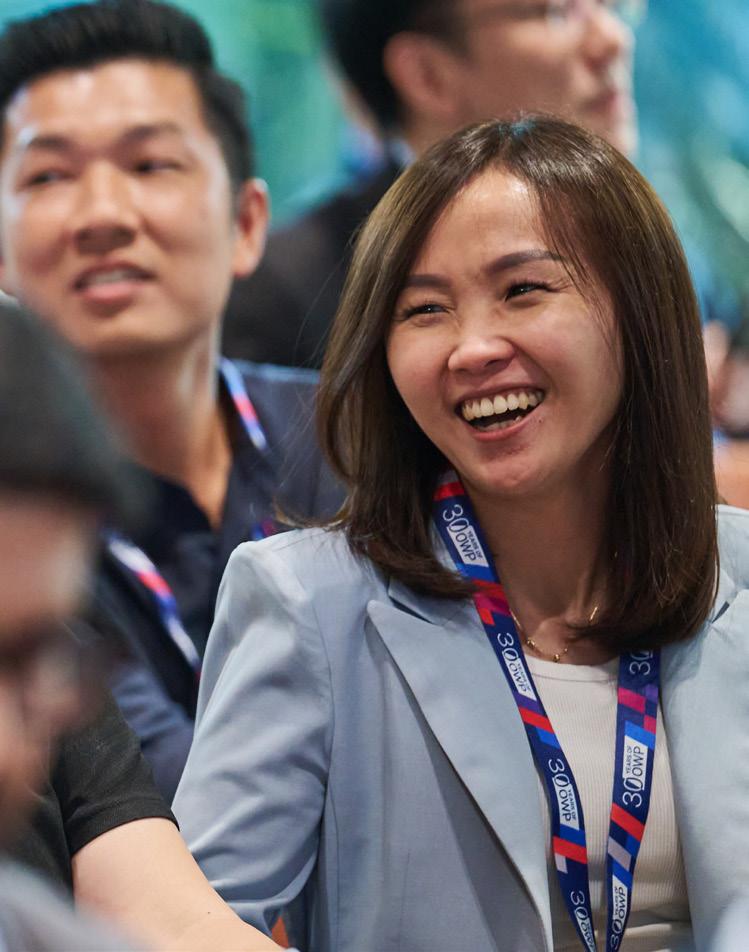
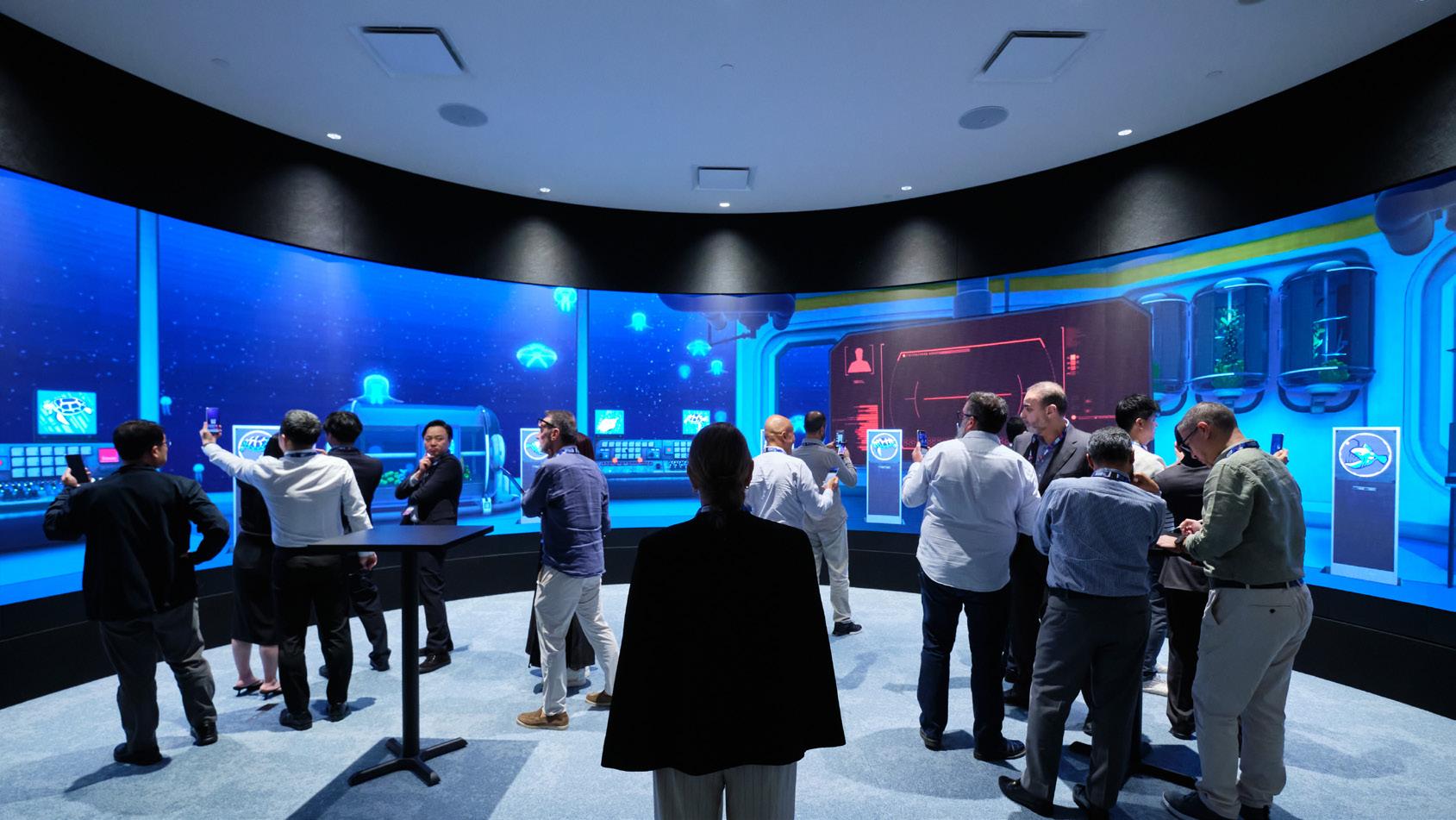
Mark Greeven Professor of Management Innovation and Dean of Asia
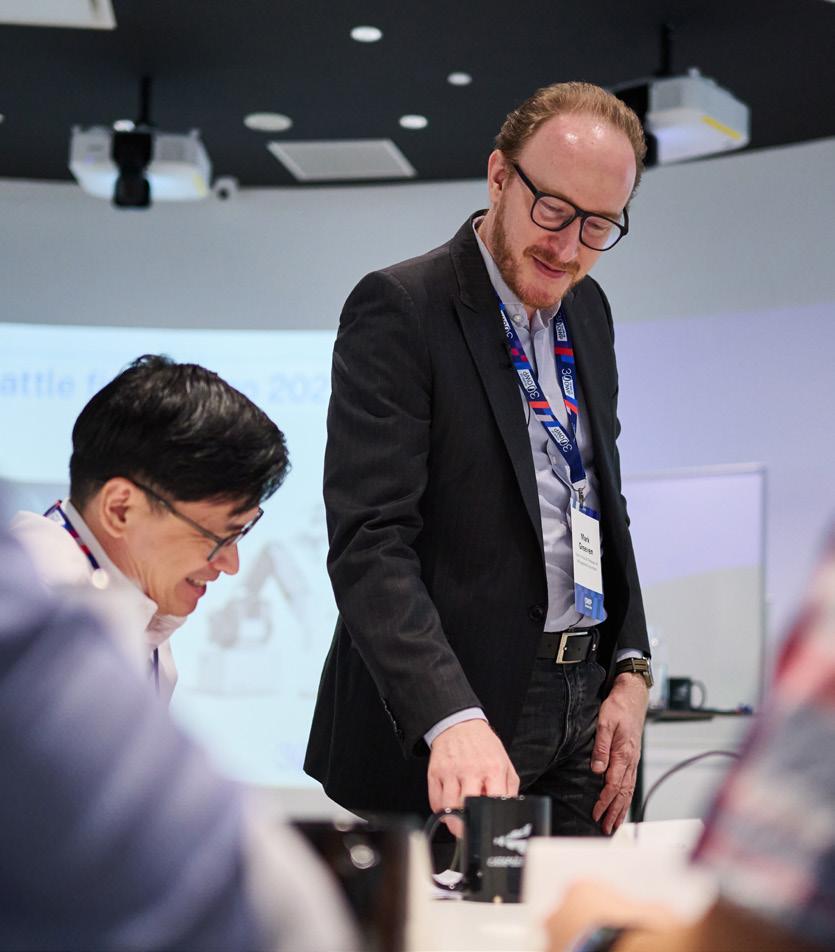
The session US/China Tech Wars: Rise of the Robot, led by Professor Mark Greeven, explored the intensifying technological rivalry between the United States and China, with a focus on artificial intelligence (AI) and robotics. The discussion highlighted how these two global powers are shaping the future of technology through contrasting innovation models, geopolitical strategies, and regulatory frameworks. The session also examined the broader implications of this rivalry for global businesses, particularly in navigating supply-chain dependencies, regulatory divergence, and fragmented technology ecosystems.
A key theme was China’s rapid recovery and strategic response following the disruptive emergence of ChatGPT in 2022. Participants analyzed how China leveraged its unique innovation ecosystem, characterized by state-driven initiatives, rapid prototyping, and integration of AI into industrial applications, to regain its competitive edge. The session also contrasted this with the US approach, which is more market-driven and reliant on private sector innovation. These differences in strategy were explored in the context of their impact on global technology ecosystems and the opportunities and risks they present for businesses.
The session emphasized the importance of dual-track strategies, where organizations integrate technologies and practices from both the US and China to build resilience and foster innovation. Participants were encouraged to critically assess the geopolitical and regulatory challenges that could impact their operations and to identify opportunities for cross-border collaboration in technology development. The discussion also touched on the role of leadership in navigating these complexities, with a focus on fostering adaptability and strategic foresight in a rapidly evolving global landscape.
By the end of the session, participants gained actionable insights into leveraging the dynamics of the US-China tech rivalry to maintain a competitive edge. They were equipped with tools to evaluate the risks and opportunities associated with this rivalry and to develop strategies that align with their organizational goals while addressing the challenges of a fragmented global tech environment.
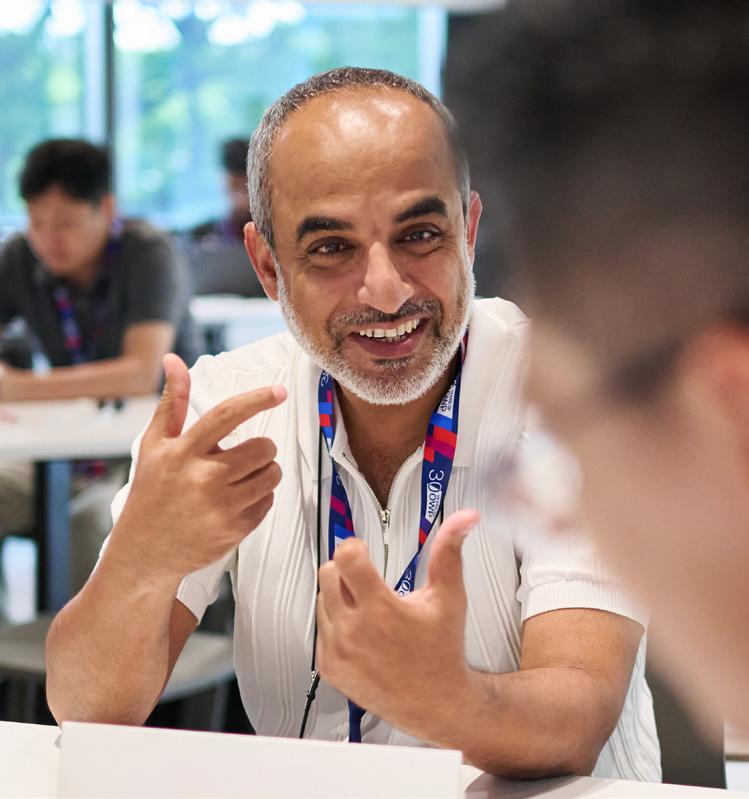
1. Adopt dual-track strategies: To remain competitive, organizations should consider integrating technologies and practices from both the US and China. This approach can help mitigate risks associated with geopolitical tensions and supplychain disruptions while leveraging the strengths of both ecosystems.
2. Understand regulatory and geopolitical dynamics: Executives must stay informed about the evolving regulatory landscapes and geopolitical tensions between the US and China. This knowledge is critical for making informed decisions about partnerships, investments, and market entry strategies.
3. Leverage China’s innovation ecosystem: China’s state-driven innovation model and rapid industrial application of AI and robotics offer valuable lessons. Companies should explore opportunities to collaborate with Chinese firms or adopt similar practices to accelerate their own innovation cycles.
4. Build resilience in supply chains: The session underscored the importance of diversifying supply chains to reduce dependency on any single region. This includes exploring alternative suppliers and investing in local production capabilities where feasible.
5. Develop leadership for a fragmented world: Leaders must cultivate adaptability, strategic foresight, and a global mindset to navigate the complexities of the US-China tech rivalry. This includes fostering crossborder collaboration and preparing for potential disruptions in the global technology landscape.
By implementing these strategies, executives can position their organizations to thrive in an increasingly competitive and fragmented global technology environment.
How savvy companies are using
Chinese AI by Amit Joshi, Mark J. Greeven, Sophie Liu and Kunjian Li
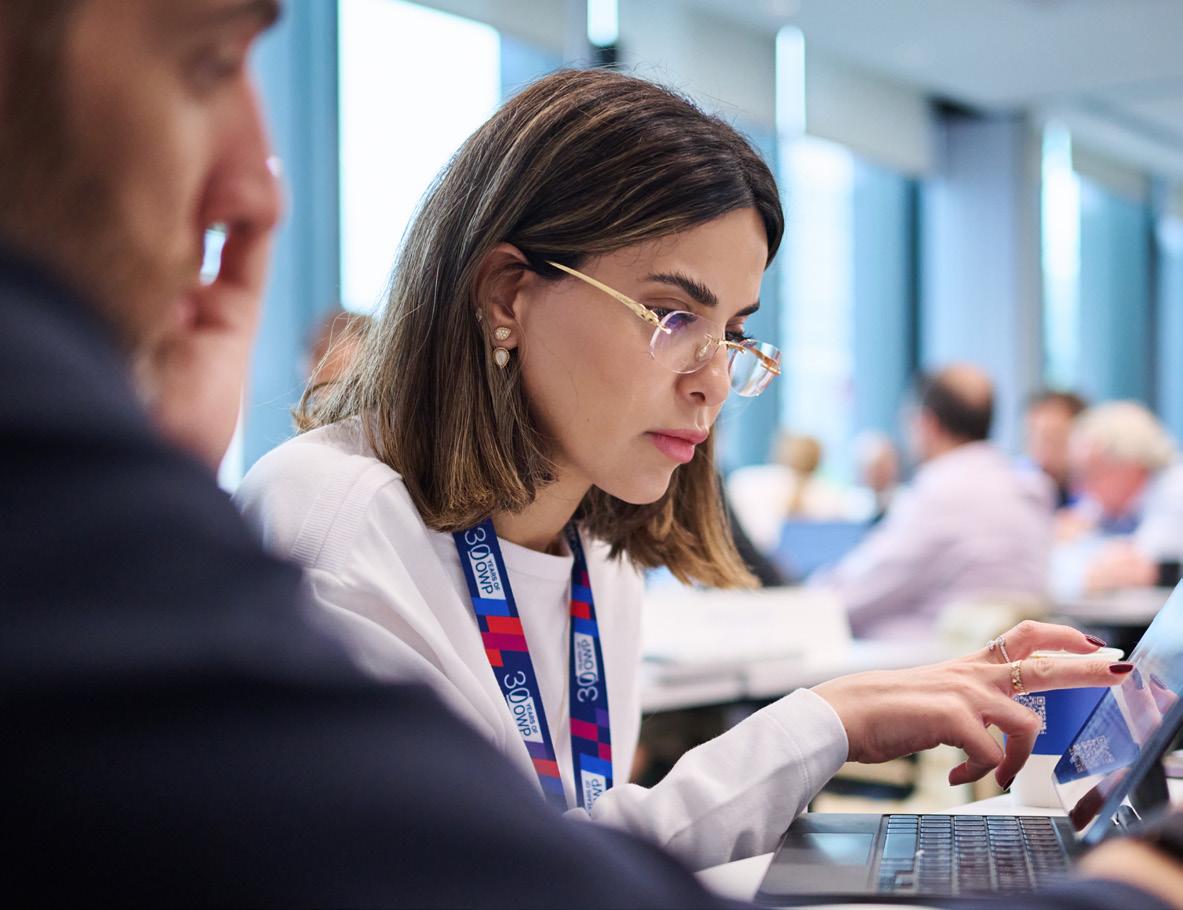


Michael Wade
TONOMUS
Professor of Strategy and Digital and Director of the TONOMUS Global Center for Digital and AI Transformation







Professor Michael Wade’s session explored the dual impact of AI on organizational performance and environmental sustainability. While AI is widely recognized for its ability to drive business outcomes – such as increasing revenue, reducing costs, and enhancing employee engagement – its environmental footprint is often overlooked. The session aimed to address this gap by examining both the negative and positive environmental implications of AI and providing actionable strategies for integrating AI and sustainability efforts within organizations.
The discussion began with an overview of AI’s environmental costs, particularly generative AI, which is energy-intensive due to the computational demands of training large models and maintaining data centers. Wade highlighted the significant carbon emissions, energy consumption, and water usage associated with AI infrastructure. He emphasized the need for organizations to adopt sustainable practices, such as optimizing AI model design, improving hardware efficiency, and transitioning to clean energy sources.
Despite these challenges, AI also holds immense potential to drive positive environmental outcomes. Wade outlined three mechanisms for leveraging AI to support sustainability:
1. See Better: Using sensors and data to increase transparency and identify areas of environmental impact
2. Act Better: Optimizing processes, reducing waste, and substituting physical activities with digital alternatives
3. Scale Better: Applying AI solutions across industries to achieve large-scale environmental benefits. Examples included precision agriculture, methane detection via satellites, and energy optimization in homes and businesses.
The session also addressed organizational barriers to integrating AI and sustainability efforts. Wade noted that digital and sustainability teams often operate in silos, limiting collaboration and shared goals. He stressed the importance of joint governance, shared incentives, and cross-functional projects to unlock synergies. Participants shared insights from their own organizations, discussing successes and challenges in aligning AI and sustainability initiatives.
To conclude, Wade introduced a role-playing exercise scheduled for the following day, where participants would simulate decisionmaking scenarios as executives in a fictional company undergoing a twin transformation in AI and sustainability. He encouraged participants to skim his recently published business novel, which provides a narrative framework for the exercise, and familiarize themselves with their assigned roles.

1. Measure and mitigate AI’s environmental impact: Executives should prioritize tracking the energy consumption and carbon footprint of AI systems within their organizations. Implement strategies to optimize model training, adopt smaller and more efficient AI models, and transition to renewable energy sources for data centers.
2. Leverage AI for sustainability goals: Identify opportunities to use AI to drive environmental benefits, such as optimizing resource use, reducing waste, and scaling sustainable practices across industries. Examples include precision agriculture, energy monitoring, and supply chain optimization.
3. Foster collaboration between digital and sustainability teams: Break down silos between digital and sustainability functions by establishing joint governance structures, shared incentives, and cross-functional projects. Encourage regular communication and alignment of goals to maximize synergies.
4. Engage with governments and regulators: Advocate for policies and incentives that support sustainable AI practices, such as tax breaks for clean energy adoption or regulations on energy-intensive AI systems. Collaborate with policymakers to align corporate and environmental objectives.
5. Prepare for twin transformations: Executives should develop strategies to simultaneously advance AI capabilities and sustainability goals. This requires balancing short-term business performance with long-term environmental impact, ensuring both are integrated into organizational priorities.
By implementing these strategies, executives can position their organizations to harness AI’s transformative potential while minimizing its environmental costs.
Twin transformation: A gripping tale of how AI and sustainability converge, and the race to get it right by Michael Wade and Konstantinos Trantopoulos

Digital sustainability for a better future by Julia Binder and Michael Wade
I enjoyed learning about ‘twin transformation’, which is the implementation of AI and sustainability transformations at the same time, and these can converge into a single initiative that can really drive the business growth for a company.
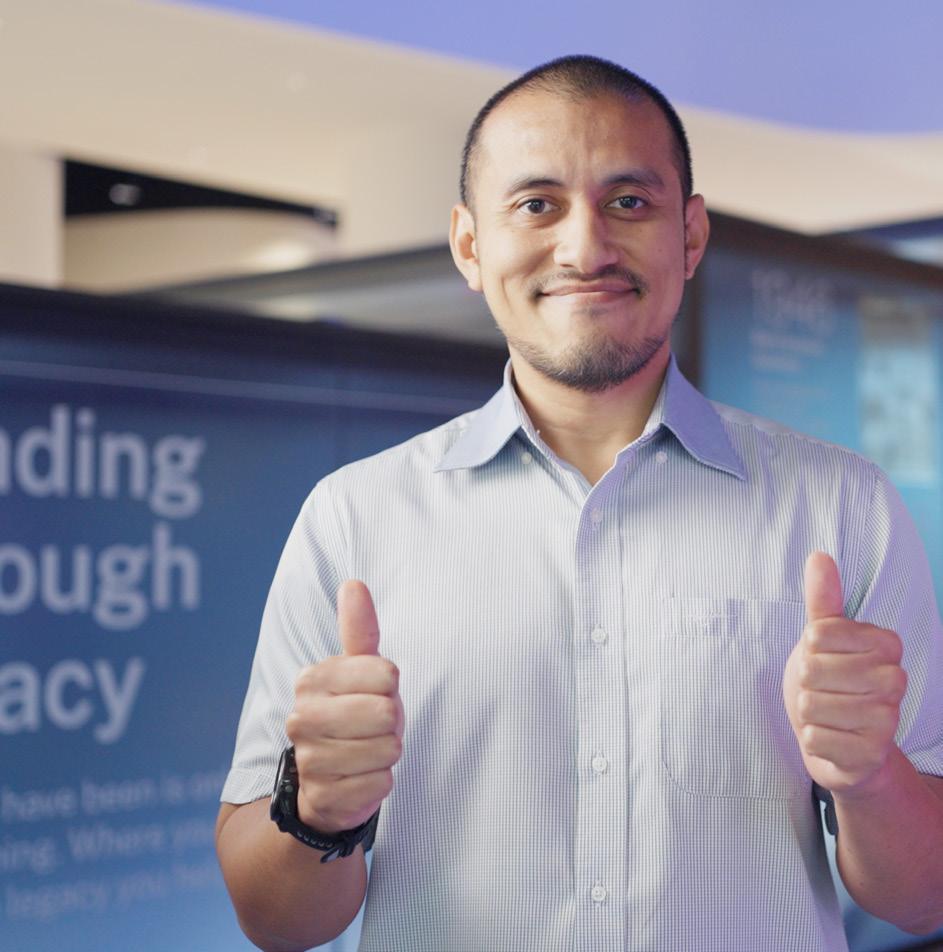
to create your AI strategy: Build or buy?
Amit Joshi Professor of AI, Analytics, and Marketing Strategy

Amit Joshi’s session focused on equipping executives with a strategic framework to decide whether to build AI solutions in-house or buy them externally. The discussion revolved around generative AI (GenAI), its transformative potential, and the practical considerations for implementing AI within organizations. The session emphasized the importance of aligning AI adoption strategies with organizational goals, resources, and industry-specific needs.
The session began with an overview of the GenAI stack, which includes hardware, cloud platforms, models, and applications. Joshi highlighted the need for executives to understand this stack to make informed decisions about partnerships and investments. He also introduced the concept of agents – advanced AI systems capable of processing unstructured data and interacting with external systems – underscoring their potential to automate processes and enhance efficiency.
A key focus was the strategic importance of data. Joshi stressed that while algorithms and computing power are increasingly commoditized, clean, well-governed, and accessible data remains the true competitive advantage. He urged participants to address foundational data challenges, such as breaking down silos and ensuring data quality, before investing in AI tools.
The session explored two approaches to customizing GenAI for organizational needs: fine-tuning and context injection. Fine-tuning involves retraining AI models with proprietary data for high precision but is costly and time
intensive. Context injection, by contrast, allows AI to access specific datasets without altering the model, offering a quicker and cheaper alternative. Participants were guided on how to choose between these methods based on factors like data stability, complexity, and the cost of errors.
Joshi then delved into the build-versus-buy dilemma, presenting three strategic options: buying off-the-shelf solutions, partnering with vendors for tailored tools, or building proprietary AI systems. Buying is ideal for standard processes and quick wins but offers limited customization. Partnering allows for industry-specific solutions but involves higher costs and vendor lock-in.
Building AI is highly customizable but resourceintensive, recommended only for organizations with unique needs or significant budgets.
Participants engaged in a practical exercise using the AI Ecosystem Canvas to define problem statements and evaluate whether to buy, partner, or build AI solutions. This hands-on activity emphasized the importance of clearly defining organizational challenges before selecting AI tools.
The session concluded with a recap of key concepts, including the importance of context in GenAI, the strategic role of data, and the tradeoffs between different AI adoption strategies. Joshi cautioned against succumbing to FOMO (fear of missing out) and urged participants to prioritize ROI-driven AI initiatives.

1. Prioritize data quality: Ensure your organization’s data is clean, well-governed, and accessible. Address foundational data challenges before investing in AI tools.
2. Define problems clearly: Avoid technologydriven decisions. Start with a clear problem statement and evaluate AI solutions based on their ability to address specific organizational challenges.
3. Choose customization wisely: Decide between fine-tuning and context injection based on your organization’s data complexity, stability, and error tolerance.
4. Adopt a hybrid approach: Consider combining build, buy, and partner strategies to balance cost, customization, and scalability.
5. Focus on ROI: Avoid chasing trends or flashy tools. Prioritize AI initiatives that deliver measurable business value and align with long-term goals.
Will your Gen AI strategy shape your future or derail it? by Konstantinos Trantopoulos, Yash Raj Shrestha, Amit Joshi, Michael Wade and Jingqi Liu
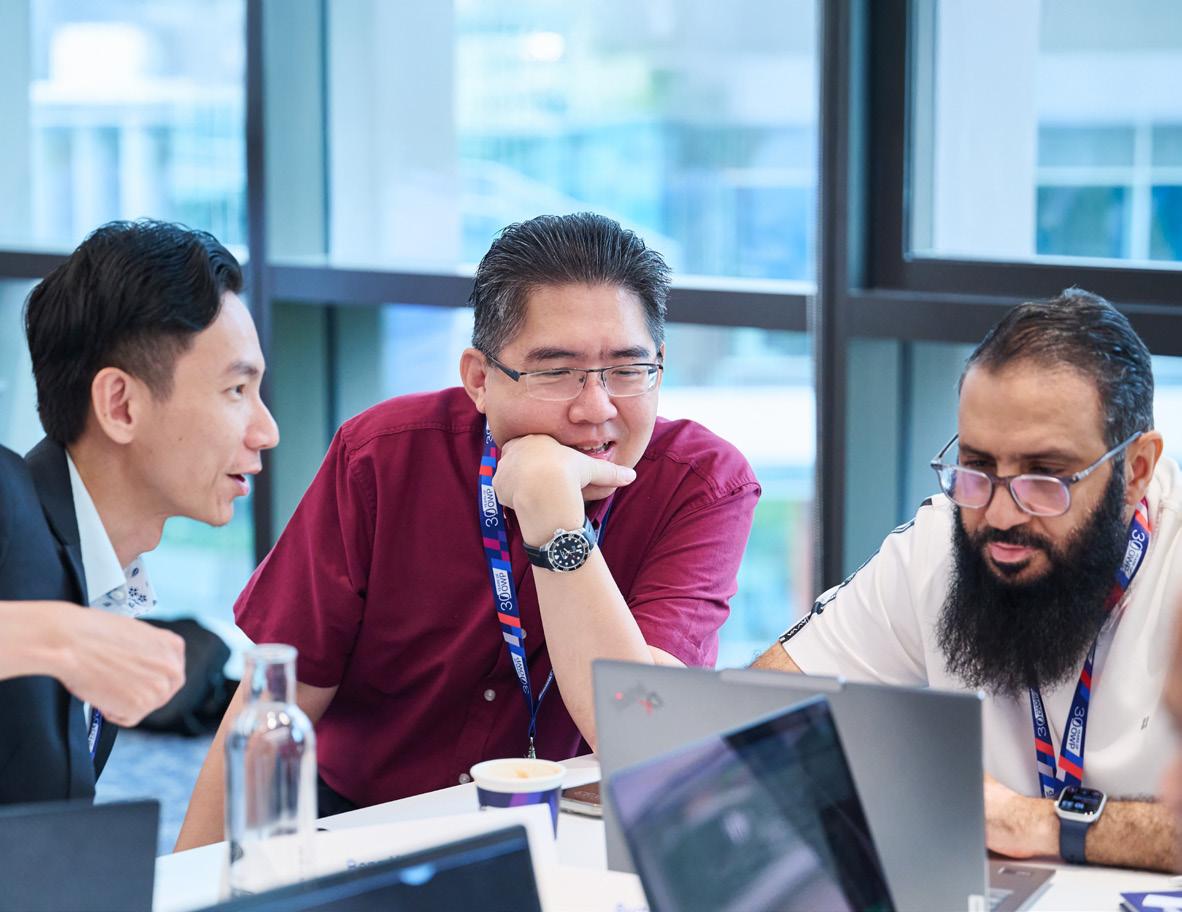

Professor of Strategy and International Management, MBA Dean and Hilti Chair
In this fireside chat, Professor Omar Toulan sits down with Dan Luo, IMD MBA alumna (Class of ’99) and a trailblazing leader whose career spans global giants like Heinz, Lego, and Fonterra.
Luo shares her remarkable journey from Wuhan to the world stage, navigating the Asian financial crisis, pivoting industries, and building a dynamic board portfolio. With deep experience in both B2B and B2C, she reflects on the leadership lessons that shaped her path: the power of democratic decision-making, handling conflict with clarity, and the importance of assembling and inspiring high-performing teams.
From career inflection points to personal milestones, Luo’s story is one of resilience, reinvention, and impact. What does it really take to lead with purpose across borders and industries? Tune in to find out.

How OCBC’s leadership journey at OWP shows the power of shared learning
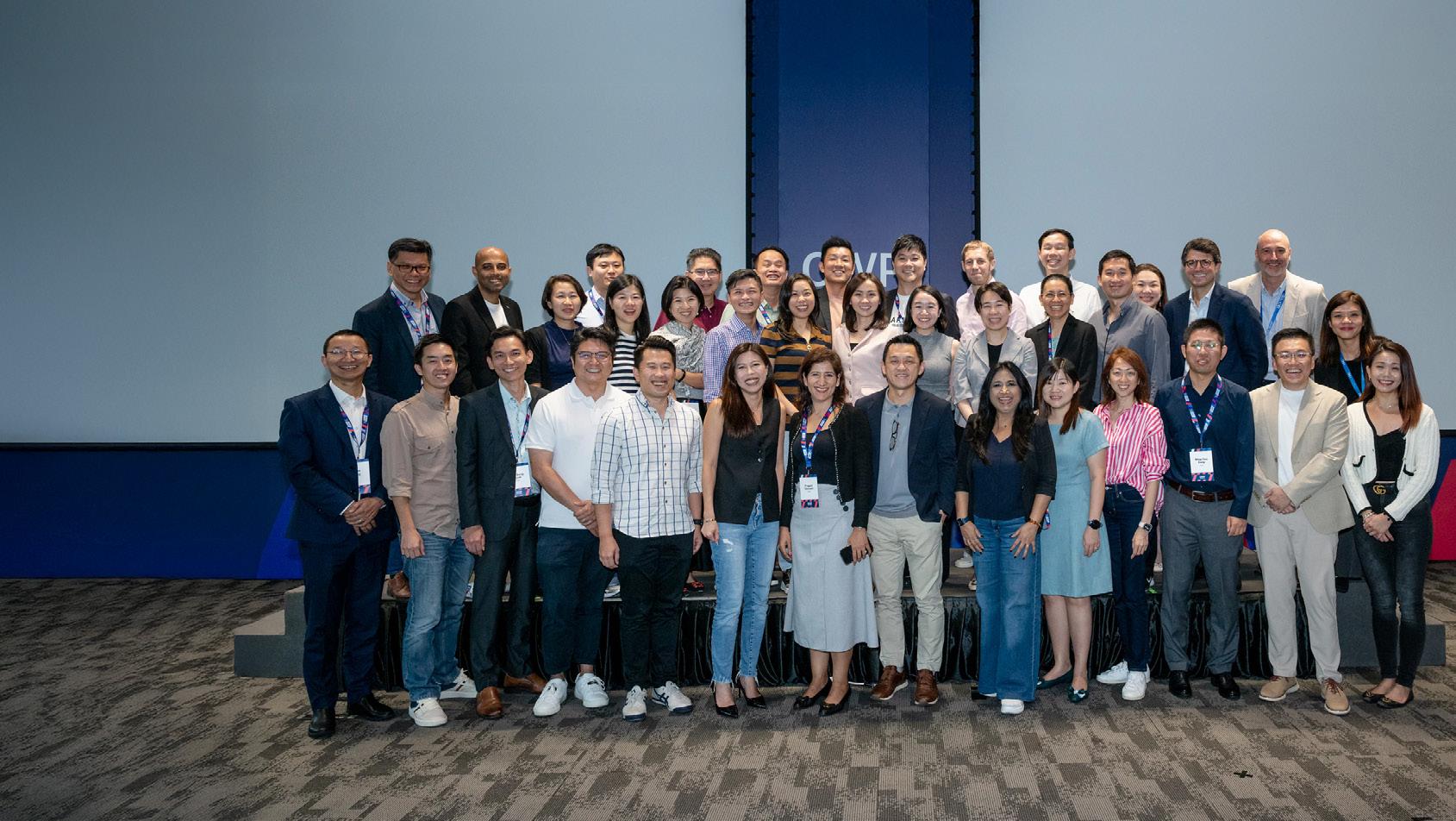
In a world where transformation is constant, leadership cannot be a solo sport. Digital shifts, new competitors, and ever-changing customer expectations are just a few of the pressures organizations face, requiring leaders to learn, adapt, and act together.
For OCBC, Southeast Asia’s longest-established bank, this collective approach to learning is a core capability. In recent years, the bank has partnered with IMD on learning journeys designed to build individual strength and shape a common leadership language within the organization.
A significant part of that journey was OWP Singapore. As it directly followed two fully custom modules focused on OCBC’s priorities, attending OWP as a team allowed OCBC’s leaders to engage directly with a diverse group of over 200 leaders, to build on previous ideas and test their own thinking against perspectives beyond the bank’s context.
We’re coming together as one group from the same company, from different functions and perspectives. As we learn together, we take away key lessons on how we can collaborate, how we can take a more customer-centric view to support our work in the future when we go back to our roles.
Stephanie Chia Executive Director, Group Strategy & Transformation Office OCBC

OCBC chose to embed OWP within its customized learning journey as a way to pressure-test thinking together and return aligned on what matters. The open format of OWP gave OCBC’s leaders space to compare ideas, challenges perspectives, and translate leadership lessons into OCBC’s organizational context. Each leader could also curate a personal learning agenda, choosing the sessions that were most relevant to their role and growth.
Because we’ve been together for the past seven months, there’s a sense of familiarity. OWP helped us to strengthen and really conceptualize the learnings that we get together as a team, and more
importantly,
how we can contribute that back to the organization as a whole.
Justin Sia
Business Head, Emerging Business Sales OCBC Bank
This blended model of tailored learning followed by global exposure amplifies the depth and durability of the takeaways for the entire team.
A hallmark of OWP Singapore is the immersive experiences where the city-state becomes the classroom. This year, participants visited organizations that represent Singapore’s core strengths in infrastructure, innovation, and long-term planning, each stop offering a different lens on how strategy is executed under real-world constraints.
That outside-in learning was paired with embodied experiences designed to translate concepts into practice: leading horses for non-verbal influence and presence; boxing for focus, agility, and resilience; and mindfulness to build clarity under pressure. For Justin, this made the week less about absorbing ideas and more about applying the leadership concepts learned in the classroom.
“The immersions are really critical because they are a bridge between theory and practice. It’s one thing to learn the concept in the classroom; when you talk to companies and hear their stories, it sticks with you. It makes you reflect: how can I apply what they shared in my organization?”
Being exposed to different industries and peers reinforced that good ideas often emerge at intersections. “Whether you’re a small startup or a large corporation, leaders need to remain agile and forward-thinking to thrive in today’s fragmented world”, he added.

For the OCBC team, the greatest takeaway wasn’t new knowledge but collective momentum. Coming to OWP as a cross-functional, cross-market group created trust, broke silos between front and back office, and gave everyone across the region a shared reference point for what “good” looks like.
For Pragati Vaswani, Managing Director at OCBC, the eight-month journey culminating in OWP reframed leadership itself.
“I’ve come to see leadership as so much more than delivering outcomes. It’s about inspiring change, creating impact, and helping others grow alongside me, while juggling seamlessly between perform and transform. Through it all, we had fun, built lasting friendships, and learned what it truly means to grow together.”
As this group of leaders return to their roles, the shared experience of OWP serves as a reference point for how they communicate across teams, question assumptions, and turn insight into action.
By blending custom depth with openprogram breadth, OCBC and IMD show what future-ready leadership looks like in practice – continuous learning that connects internal alignment with external curiosity, and a team that grows stronger together.
After this experience, I want to put more effort into being an ambidextrous leader –to experiment more, take more risks, and allow room for failure, something we don’t do often enough.
Pragati Vaswani Managing Director OCBC

Revisit our time at OWP by watching our daily highlights.


